"GLOBALLOCAL" Award Bestowed on Osijek-Baranja County
ZAGREB, 10 May (Hina) - The GLOBALLOCAL award has been bestowed on the eastern Croatian county of Osijek-Baranja for being successful in creating an enterprise-friendly atmosphere in Central and Southeast Europe, the county authorities reported on Monday.
The project of conferring this award is aimed at drawing attention to successful local communities and public institutions that apply original solutions and creative measures to boost sustainable entrepreneurship.
This year, 122 anonymous proposers nominated 263 candidates for this award and the award hopefuls came from seven countries.
County Prefect Ivan Anušić was quoted as saying that this prize was yet another proof of the good policies pursued in the county to boost SMEs.
The award-giving ceremony is to take place in Dubrovnik later this year.
For more, follow our lifestyle section.
PM Andrej Plenković: Zoran Milanović Has Stepped Out of the Framework of a President's Normal Conduct
ZAGREB, 30 March, 2021 - Prime Minister Andrej Plenković said on Tuesday that with his posts on social networks, President Zoran Milanović "has stepped out of the framework of normal conduct for a president," adding that his hate speech has "practically drawn a target on MP Milorad Pupovac."
Milanović wrote on his Facebook profile on Monday that "before he runs away to Brussels," Plenković would have to render his accounts, with Plenković saying that the President was continuing his ranting and insults.
"These are threats in fact, accusations of political corruption, robbery, criminal conspiracy. I will say once again, he has entirely stepped out of the framework of normal conduct for a president," Plenković told a press conference during a visit to Osijek-Baranja County.
That is not just his style or his being rude, as the leader of the Social Democratic Party (SDP) Peđa Grbin tried to downplay, said Plenković who considers that Milanović has resorted to that because he was legally and politically badly defeated in the incorrect procedure which he, without any cause, began with the recommendation of the president of the Supreme Court.
Plenković said that the President's spokesman Nikola Jelić was flustered and warned that he was attacking Hina reporters. Jelić publicly called out Hina reporter Sandra Bartolović on his Twitter account because of her sharp private comments regarding Milanović's behaviour and said that Plenković had referred to anyone who did not think like him as being the "dregs of social networks."
Milanović's posts are the "dregs of social networks"
"That is frightening and striking. I will now explain that to his flustered spokesman who attacks Hina reporters when I said "dregs of social networks," because I see that he and his partners in Bridge do not understand what that means. For me that is hate that is developing and damaging, poisoning society," said Plenković.
"Milanović's statements are the dregs of social networks. What he is writing is hate speech and I will be absolutely explicit - he has practically drawn a target on MP Pupovac, and Pupovac confirmed that this morning on the radio," underscored Plenković.
He once again called out SDP's candidate for Zagreb mayor Joško Klisović and Milanović's chief-of-staff Orsat Miljenić to stop hiding and say if they agree with Milanović's "drawing a target on the leader of the SDSS (Independent Democratic Serbian Party)."
"Do we all think that we need to wake up from what he is doing or will we just say 'he's like that.' That cannot be. He can rant on as he likes but he will come across sharp responses from us all who have sound reason," said Plenković.
Asked whether he was referring to hate speech in the legal sense, Plenković answered affirmatively. "What is this, what does this look like? We need to wake up. We have become a little too tolerant," he said and called on reporters and editors to "watch and see who is saying what and make it clear who is who."
For more about politics in Croatia, follow TCN's dedicated page.
VIDEO: Move Your Borders and HeadOnEast to Osijek-Baranja County!
March 27, 2021 - You'll want to HeadOnEast to Osijek-Baranja County after seeing all the region has to offer this year!
HRTurizam writes that the HeadOnEast project, with which the Osijek-Baranja County Tourist Board has already successfully promoted the destination, will take a step forward in the new tourist season.
Namely, as could be heard at this year's first "tourist coffee," or socializing with journalists, HeadOnEast has been standardized, and an agreement has been reached on cooperation with all tourist boards operating in Osijek-Baranja County.
Thus, the Osijek-Baranja County Tourist Board, together with the tourist boards of Bilja, Baranja, Osijek, Draž, Đakovo, Erdut, Donji Miholjac, Valpovo, Bizovac, Našice, and Belišće, presented numerous initiatives and projects with which the system is actively preparing for the tourist season. And according to the program prepared by the tourist boards, there will be interesting manifestations and events in eastern Croatia this year!
As could be heard from the director of the Osijek-Baranja County Tourist Board, Ivana Jurić, the emphasis was on dispersed events. This means that there will be something for everyone, and events will be held throughout the year in different locations. Most importantly, the same visuals will be presented in the entire county in terms of communication.
The meeting began by reading the letters from Slavonian and Baranja citizens with an invitation to move your borders and discover this picturesque destination already in spring. This was the introduction to the new promotional campaign of the Osijek-Baranja County Tourist Board called "Move Your Borders," which started this week at the national level.
The further development of the brand platform HeadOnEast Croatia / Visit Slavonia Baranja was presented, and new visuals for destinations make up the offer in Osijek-Baranja County.
Thus, for the first time, all three Baranja tourist boards act under one visual identity: the Municipality of Bilje - Kopački rit Tourist Board, the Municipality of Draž Tourist Board, and the regional Baranja Tourist Board.
This informally united tourist board, in cooperation with the county tourist board, is organizing a new event called "Month of Baranja cuisine" this spring, in line with current epidemiological measures. From April 10 to May 2, every weekend, an open-air workshop will be held on rural estates for 25 participants to prepare authentic Baranja dishes, while Baranja restaurants will offer old dishes in a new guise.
Projects implemented in cooperation with the Ministry of Tourism and Sports and the Croatian National Tourist Board, such as "Safe Stay in Croatia" and special offers for digital nomads, were also presented.
As the new Law on Foreigners has been in force since the beginning of the year, allowing you to stay in Croatia for up to a year, the Osijek-Baranja County Tourist Board has joined the project to promote the destination as an ideal place to stay for digital nomads, through special programs prepared in cooperation with Golden Slavonia Travel and Maksi Tours, local travel agencies that deal exclusively with attracting guests to Slavonia and Baranja.
Through the offer of congress and team-building programs, the destination was presented to international customers at the MEETEX business fair. This time, the Croatian Congress Industry Fair was held virtually, and the Osijek-Baranja County Tourist Board, Hotel Osijek, and Golden Slavonia Travel presented the destination's offer at a dozen B2B meetings held via the Zoom platform with potential buyers from Israel, Germany, Austria, Finland, Belgium. France and Italy. The interlocutors were representatives of large companies such as Ericsson and travel and event agencies specializing in smaller groups and incentive programs.
They are also actively working on developing new products such as circular cycling routes in the most attractive locations in cooperation with Osijek-Baranja County, which recently submitted a project on this topic to the tender of the Ministry of Tourism and Sports. In the meantime, the City of Đakovo Tourist Board informally joined forces with the municipalities in the Đakovo region and started preparing the first "outdoor" routes.
The director of the Osijek-Baranja County Tourist Board, Ivana Jurić, points out that the goal of all activities and the new campaign is to invite domestic visitors to move to eastern Croatia and Slavonia and Baranja, but also to push the boundaries in the perception of this interesting and yet undiscovered region of Croatia.
For the latest travel updates and COVID-19 news from Croatia, CLICK HERE.
Syrian Migrant Family Rescued from Inaccessible Slavonia Wetlands
February 13, 2021 – Osijek-Baranja police rescued a Syrian migrant family, including two children, from inaccessible Slavonian wetland terrain. They had become cut off and stranded on an island, surrounded by swollen waters
Osijek-Baranja police have rescued a Syrian migrant family, including two children, from inaccessible Slavonian wetland terrain, police revealed in a statement released on Saturday 13 February. They had become cut off, surrounded by swollen waters, in the area around Kopacki rit Nature Park.
At around 10 a.m. Friday 12 February, in a forest area near Aljmaš, police found a 19-year-old Syrian citizen during a regular patrol. The 19-year-old asked for police help because his family was cut off on a river island of Kopački rit.
Immediately after learning about the other members of the Syrian migrant family, the police dispatched two patrol boats to look for them. They discovered the Syrian migrant family in a very short time. In addition to the teenager already discovered, police found the rest of the Syrian migrant family travelling party to include three women, born in 1973, 1998 and 1999, and two children, born in 2016 and 2017.
The found persons were transported to the mainland by the police. There, they were met by an ambulance, which had been called due to cold temperatures in the area and fears their exposure could have lead to hypothermia. They were transported to the Osijek Clinical Hospital Center (KBC).
The Syrian migrant family was released from the hospital later in the same day.
It has been established that the Syrian migrant family have expressed their intention to apply for international protection in the Republic of Croatia. They have been sent to the Shelter for International Protection Seekers, a reception centre for asylum seekers in Zagreb, said the police.
Kopački Rit, where the Syrian migrant family were rescued, is a nature park in the eastern Croatia municipalities of Bilje and Kneževi Vinogradi. It is located northwest of the confluence of the Drava and the Danube, right next to the border with Serbia. It is comprised of many backwaters, marshland and ponds that exist immediately between these two great rivers. It is one of the most important, largest and most attractive preserved intact wetlands in Europe.
For the latest travel info, bookmark our main travel info article, which is updated daily.
Read the Croatian Travel Update in your language - now available in 24 languages.
PHOTOS: Incredible Transformation of City Centre Osijek Art Nouveau Villa
January 16, 2021 – An incredible Osijek Art Nouveau villa, situated in the heart of the city centre, it took local entrepreneur Branko Ostović almost 10 years to buy the famous, decaying Villa Batory. In just 18 short months he has returned the building to its former glory
Every town has a grand old ruin. It's the place residents drive past and dream of owning. “If I had a million Euros, I'd buy that place, bring it back to its best and live like a king”
Croatia has more of these kinds of buildings than most. For hundreds of years these lands were presided over by elite European families and royalty who used their considerable wealth to build castles, stately homes, hunting lodges and villas. After the Second World War, such buildings were seized by the state and, for numerous reasons, many fell into disrepair. One such building was Villa Batory, a city centre Osijek Art Nouveau villa.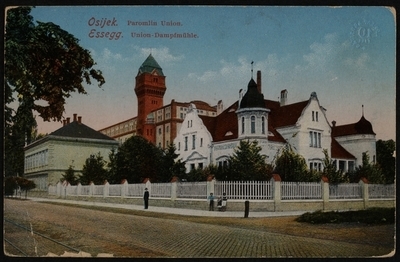 How Villa Batory originally looked, not long after its completion in 1906
How Villa Batory originally looked, not long after its completion in 1906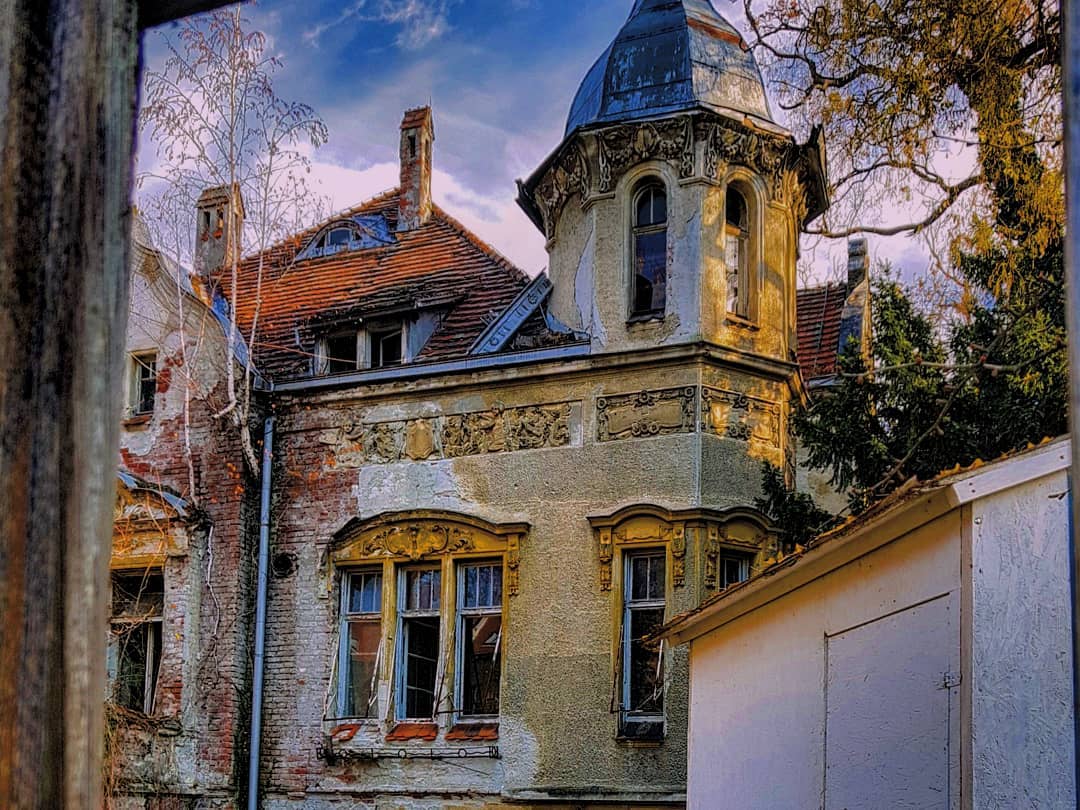 The state of disrepair the villa fell into over the last 20 years - it still looked impressive, if unloved © Dvorci, utvrde i stari gradovi Facebook / Aleksandra Petrović
The state of disrepair the villa fell into over the last 20 years - it still looked impressive, if unloved © Dvorci, utvrde i stari gradovi Facebook / Aleksandra Petrović
For over 20 years, this incredible Osijek Art Nouveau villa has lain empty. Prominently positioned on the corner of Radićeva and Reisnerova streets, right in the heart of Osijek, the building has drawn admiring stares ever since it was built in 1906. Even while empty and left slowly decaying, its impressive towers, intricate stone and plasterwork and considered architectural details ensured this Osijek Art Nouveau villa was never far from the daydreams of anyone who walked by.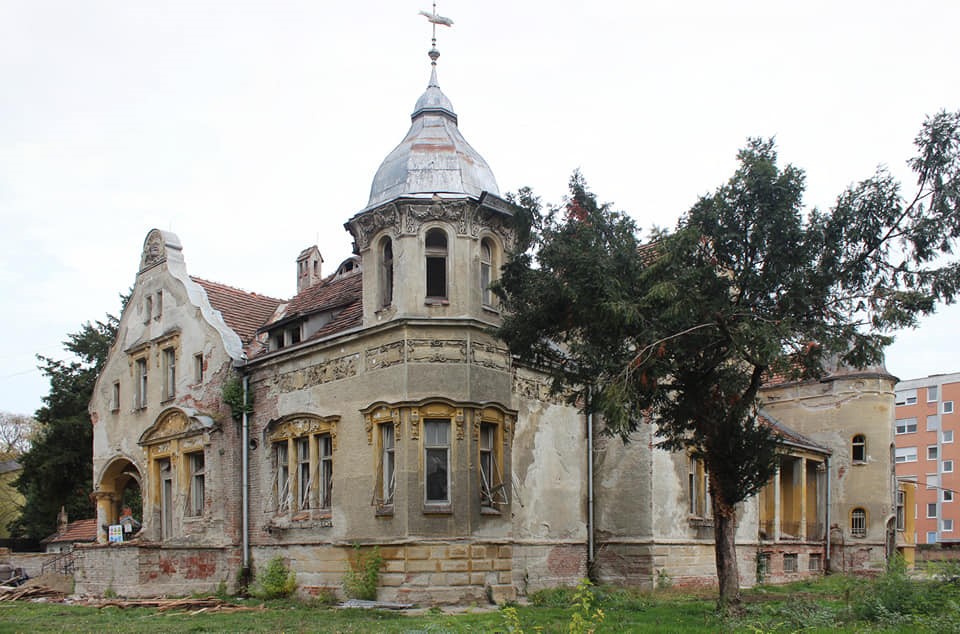 An incredible architectural gem, wasting away, until now... © Croatian Heritage Facebook
An incredible architectural gem, wasting away, until now... © Croatian Heritage Facebook
One such daydreamer was Branko Ostović. Only, being one of Osijek's successful entrepreneurs, Branko has perhaps more get-up-and-go than many idle dreamers. For him, daydreams were simply not enough. For almost 10 years he tried to negotiate the purchase of the receding Osijek Art Nouveau villa. Progress was difficult, given the listed nature of the property, past disputes over ownership and the building lying within the ownership of the local hospital, who had no funds to renovate and required state permission to sell.
Finally, in 2019, Branko Ostović successfully assumed ownership of the Osijek Art Nouveau villa. In just 18 short months – and a considerable financial investment – he has not only halted the building's decline but has restored its outer facade so that Osijek residents can once again take pride, rather than pity, in this city centre architectural gem. He has renamed the villa 'Mimi', after his wife, a popular local teacher.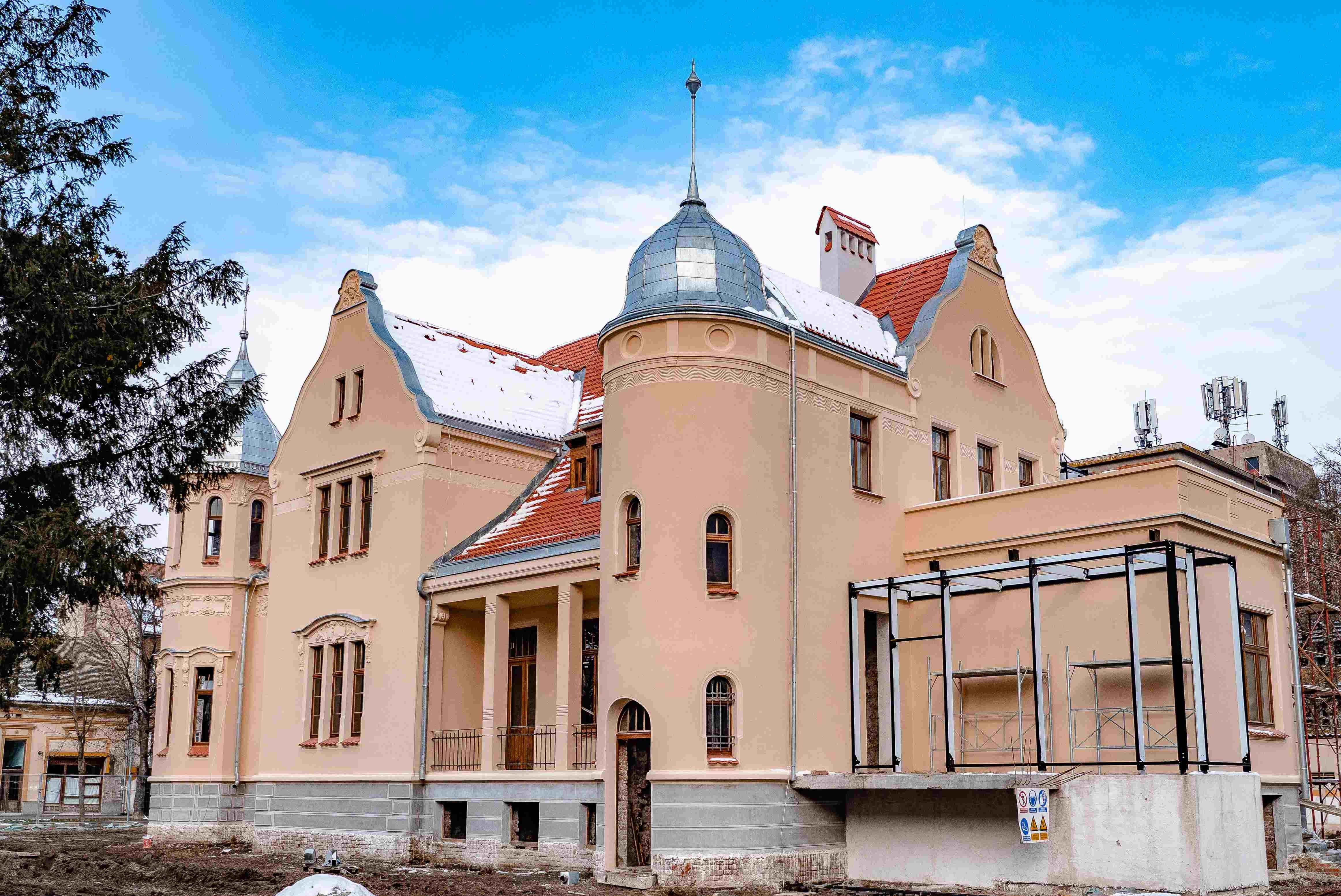
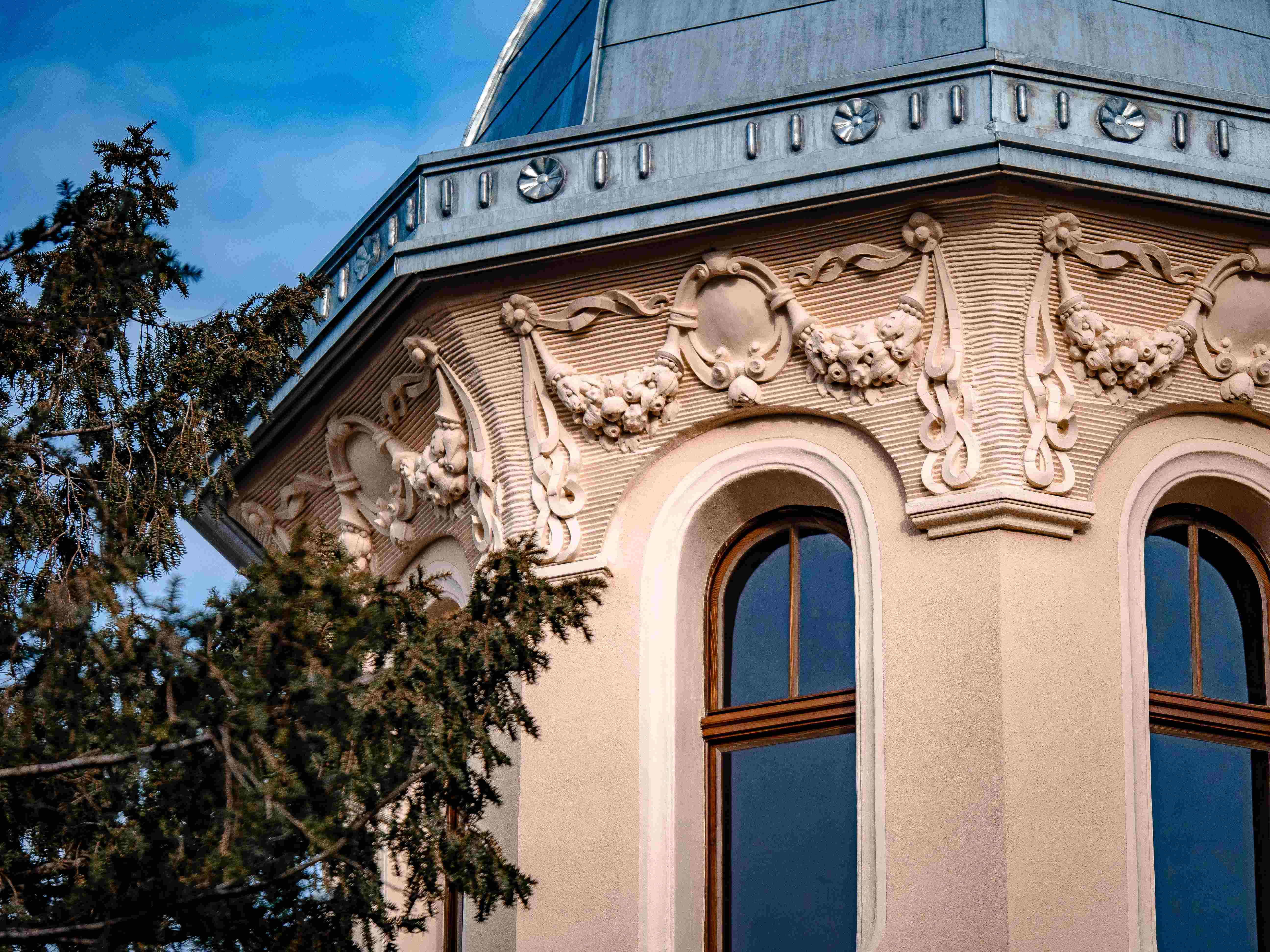
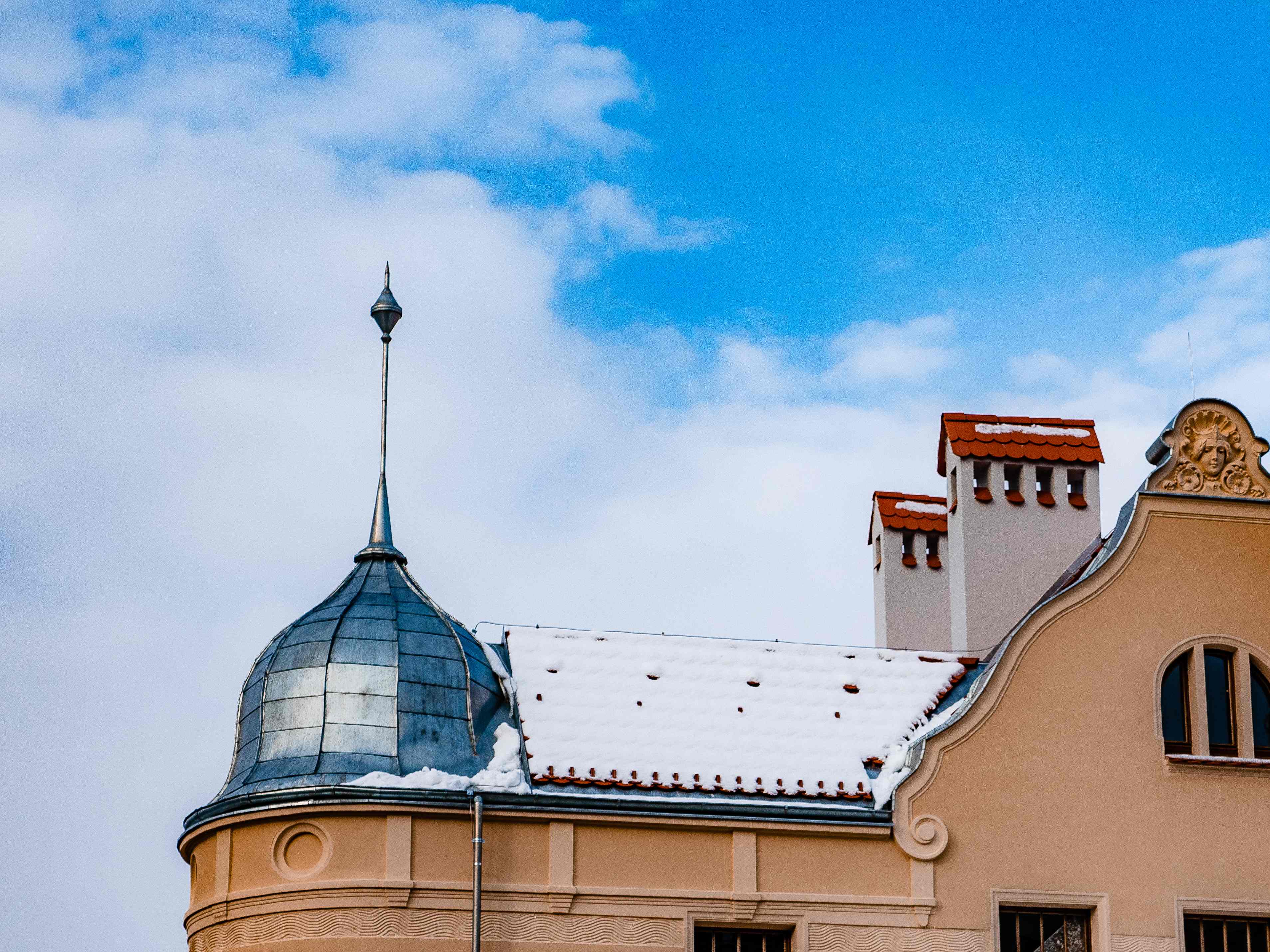
The villa exists within grounds that cover an enormous 3000 square metres. This is a considerable tract of land, given it is right in the heart of the city. It was built in 1906 as the villa of the manager of Paromlin Union (one of the largest mill plants in the area) by noted Osijek builder Otto Struppi. It is just one of a series of art nouveau gems that lie in this westerly section of the city.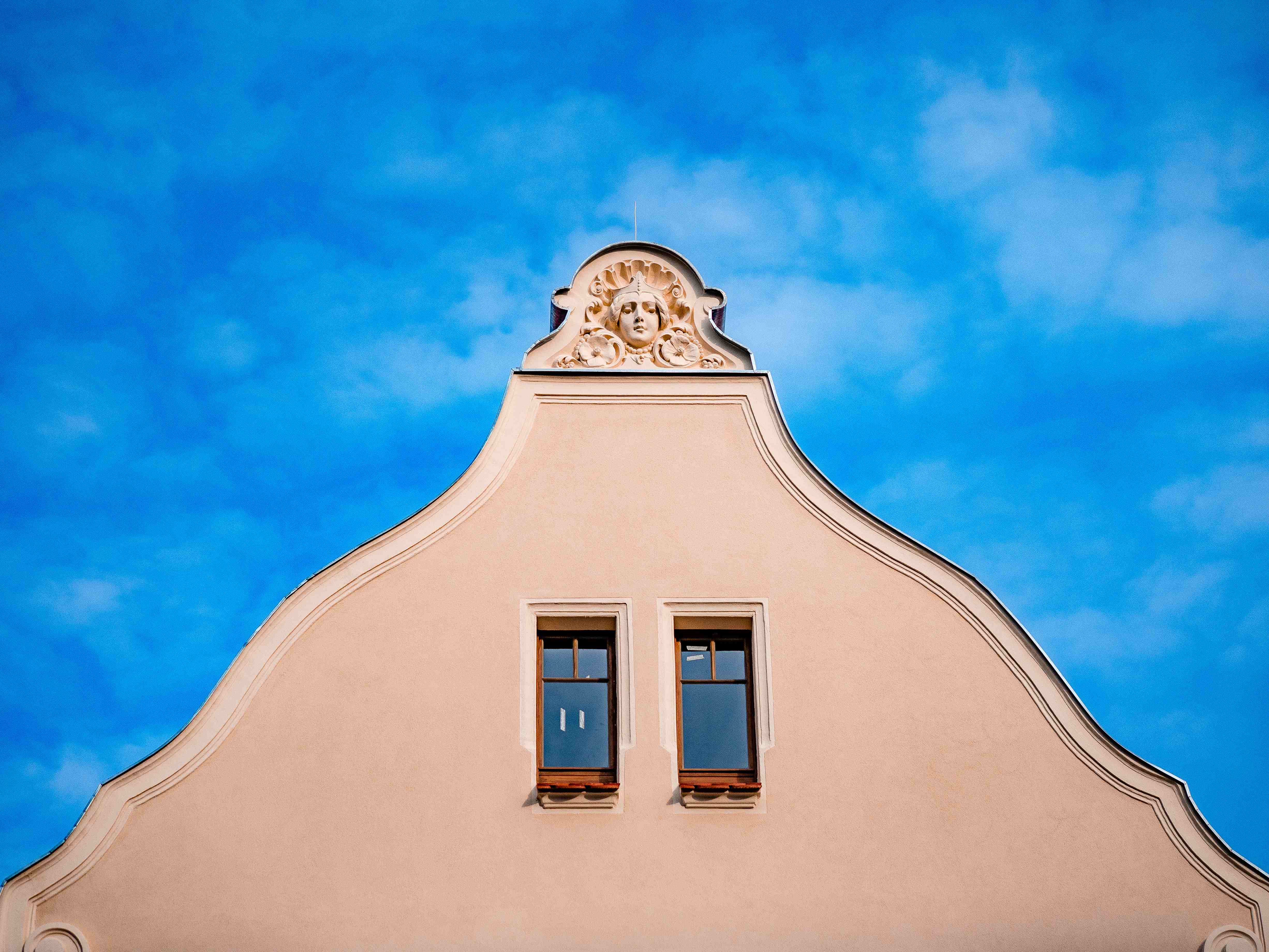

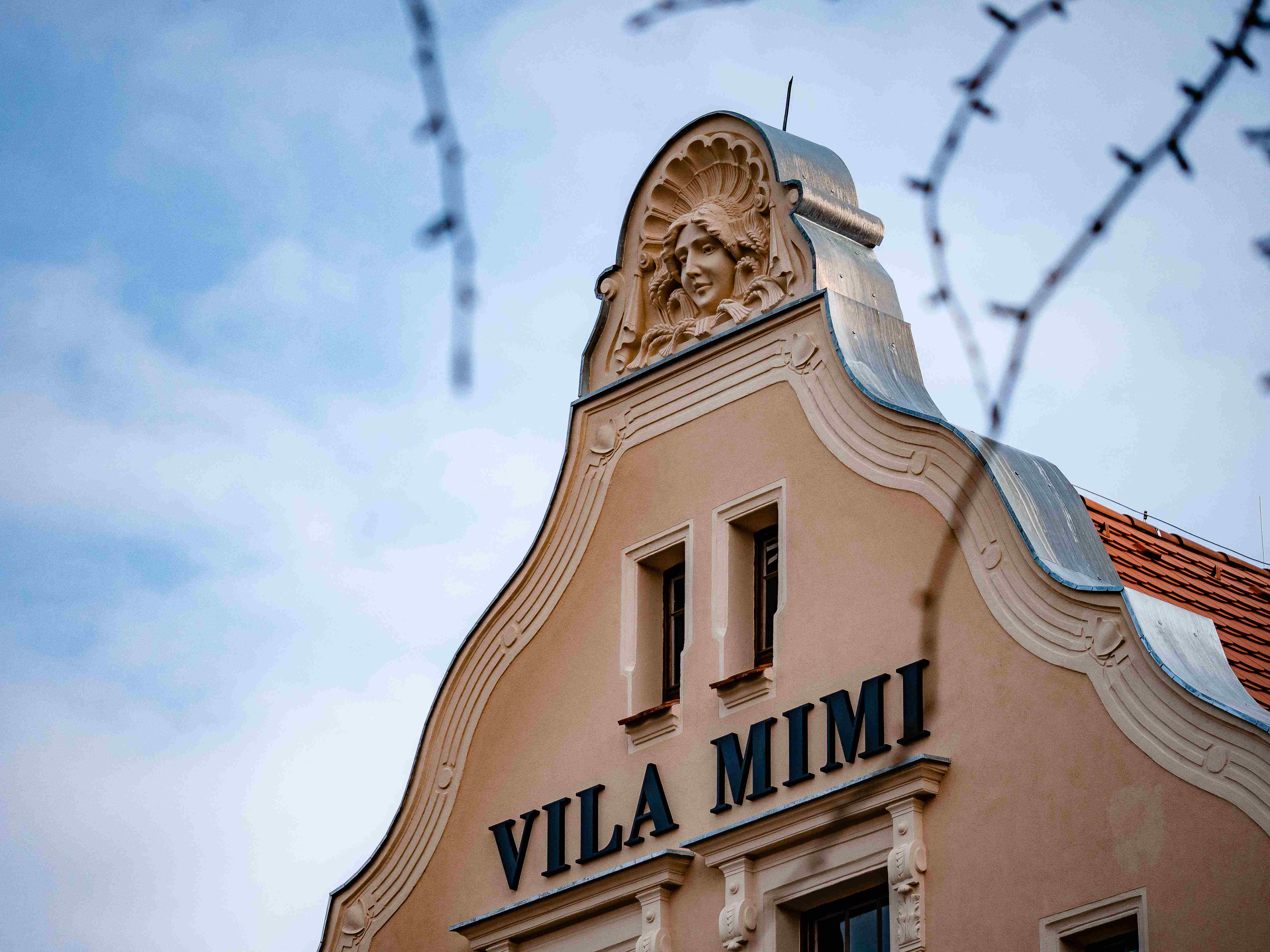
Throughout his attempts at purchasing the building, Branko Ostović had no real commercial plans of what he could do with the building. Recognised for its architectural worth, there are restrictions imposed by the state on how any renovation may treat the property. The interior cannot be altered in a way that would the property better suited to contemporary living accommodation. Ostović's main motivation for buying it was simply to stop the rot and return it to its former glory.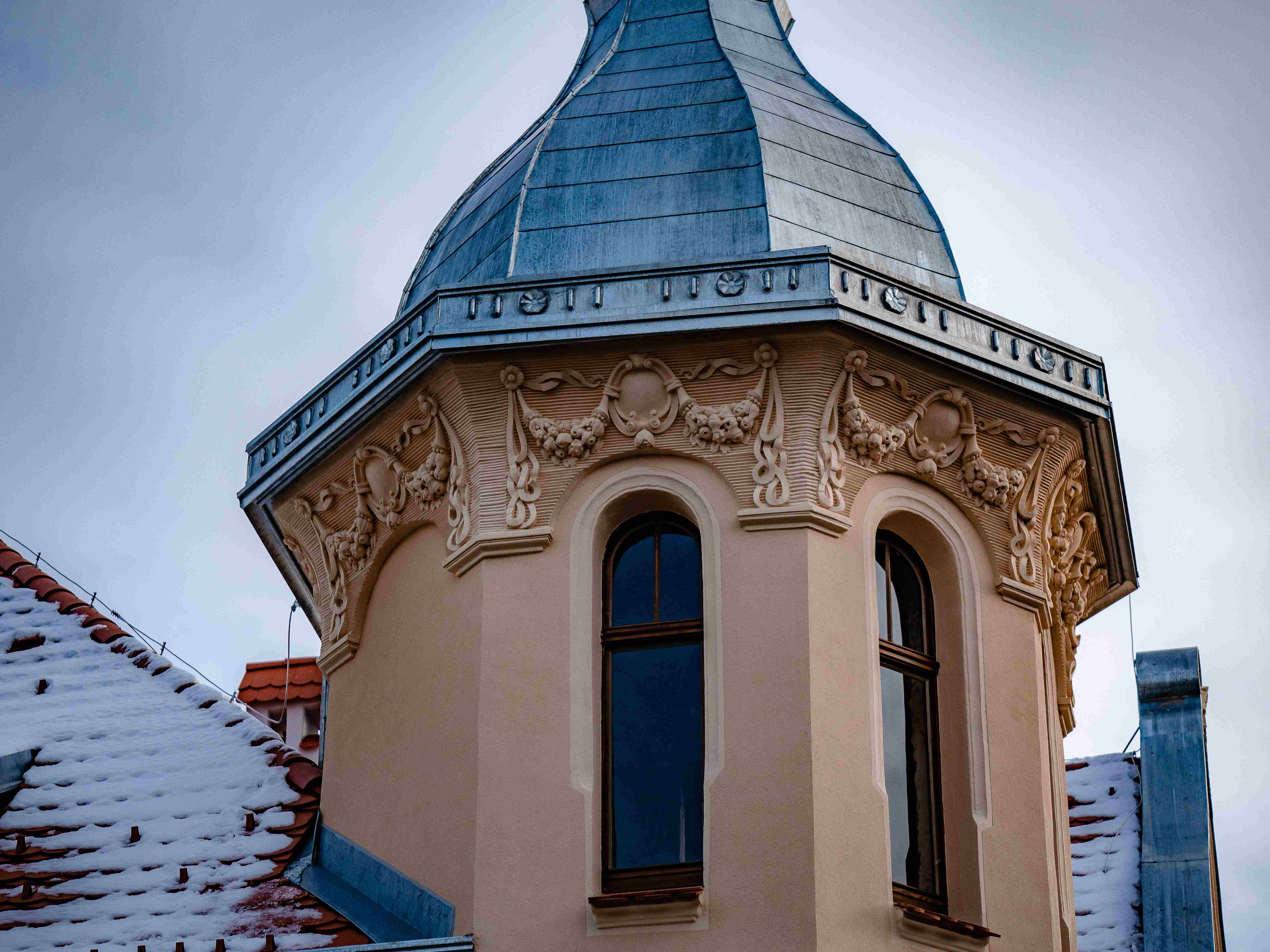
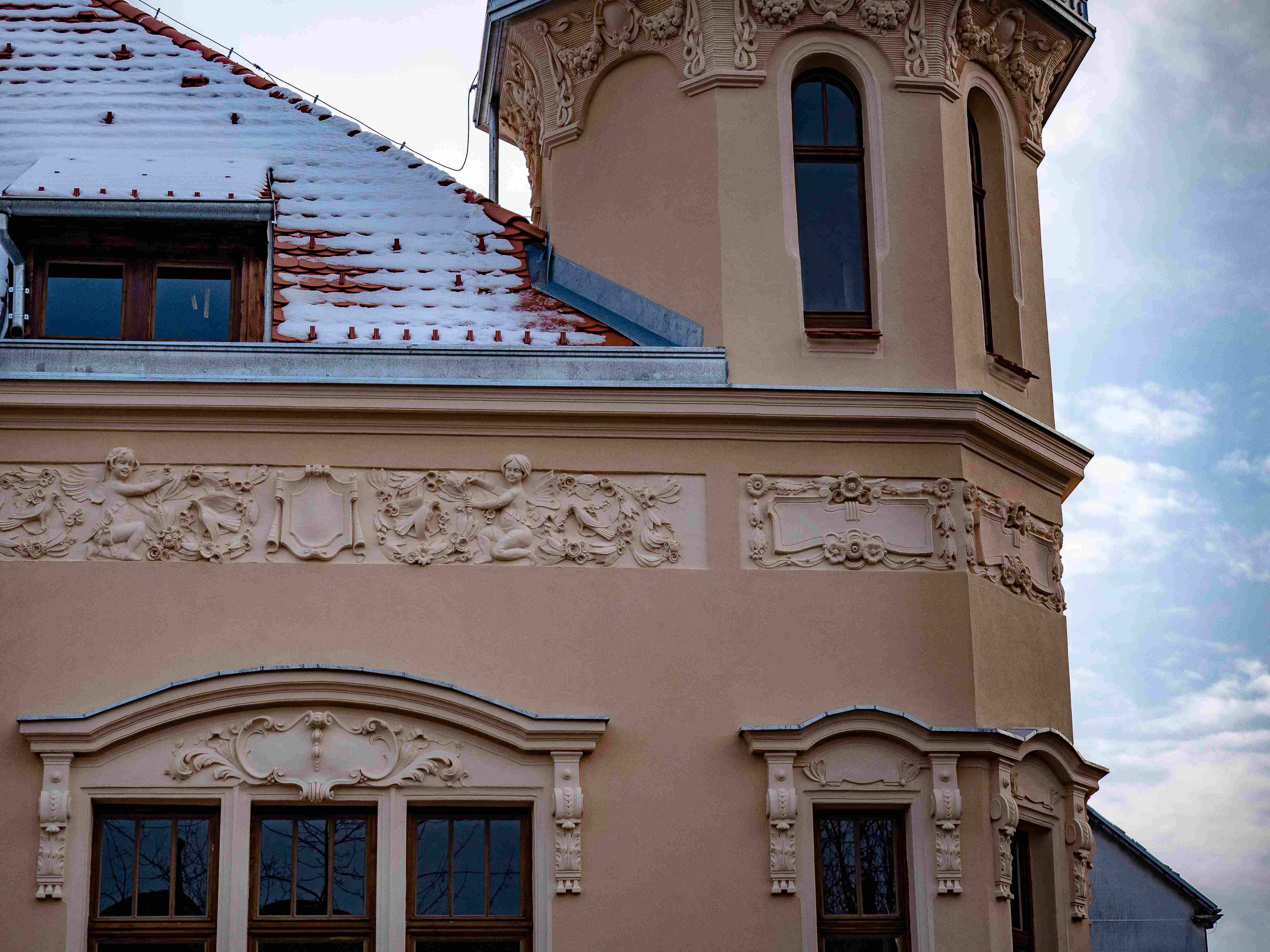

He has so far invested some 40 million kuna in the restoration and 5 million kuna in the initial purchase. 95% of work on the exterior is complete, although further investment is needed for the interior. Focussed on completing the long-held project, Ostović still has no clear plans for the building and no potential tenants. He imagines the Osijek Art Nouveau villa might make a good home for a polyclinic or a hotel.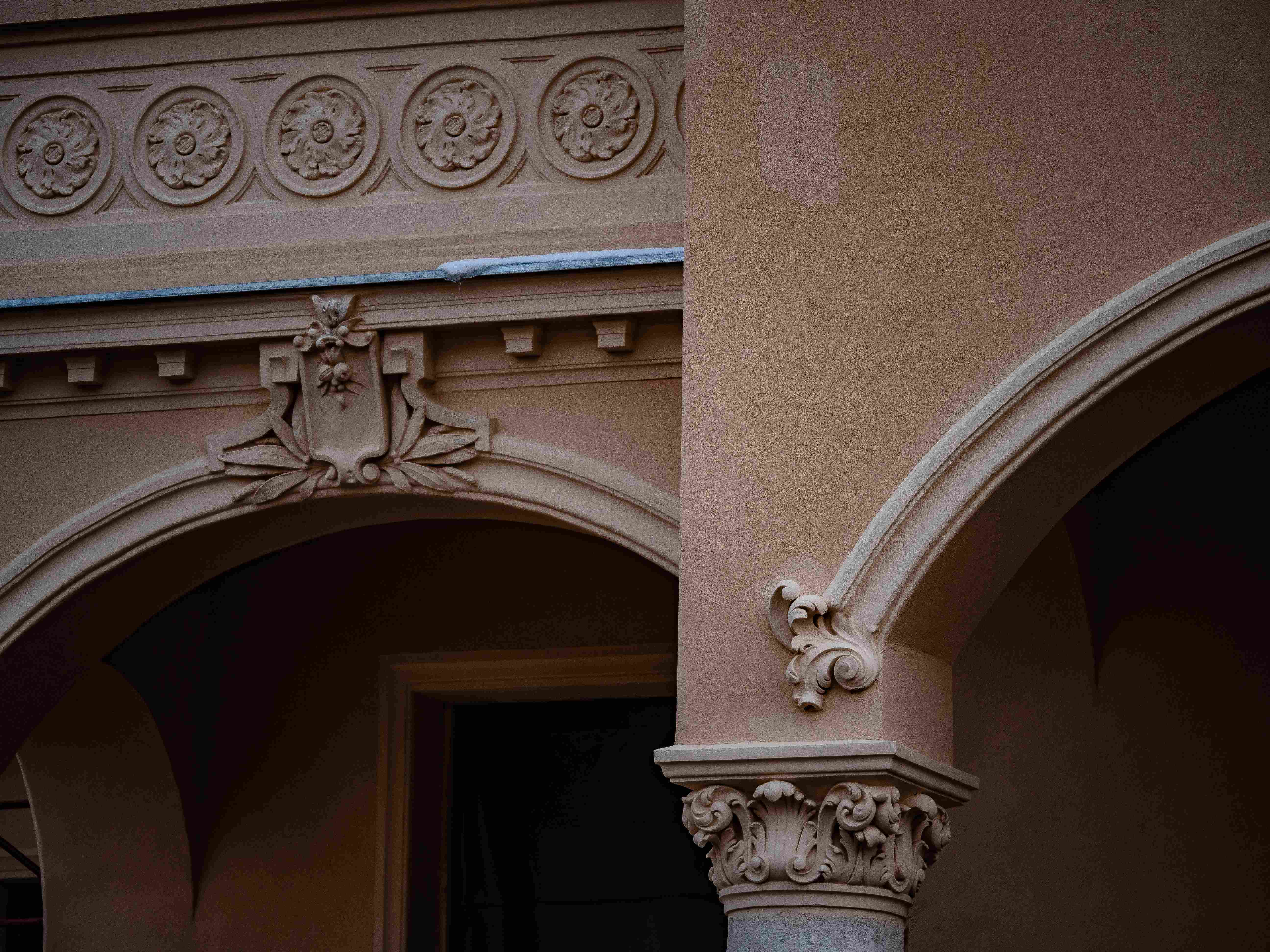
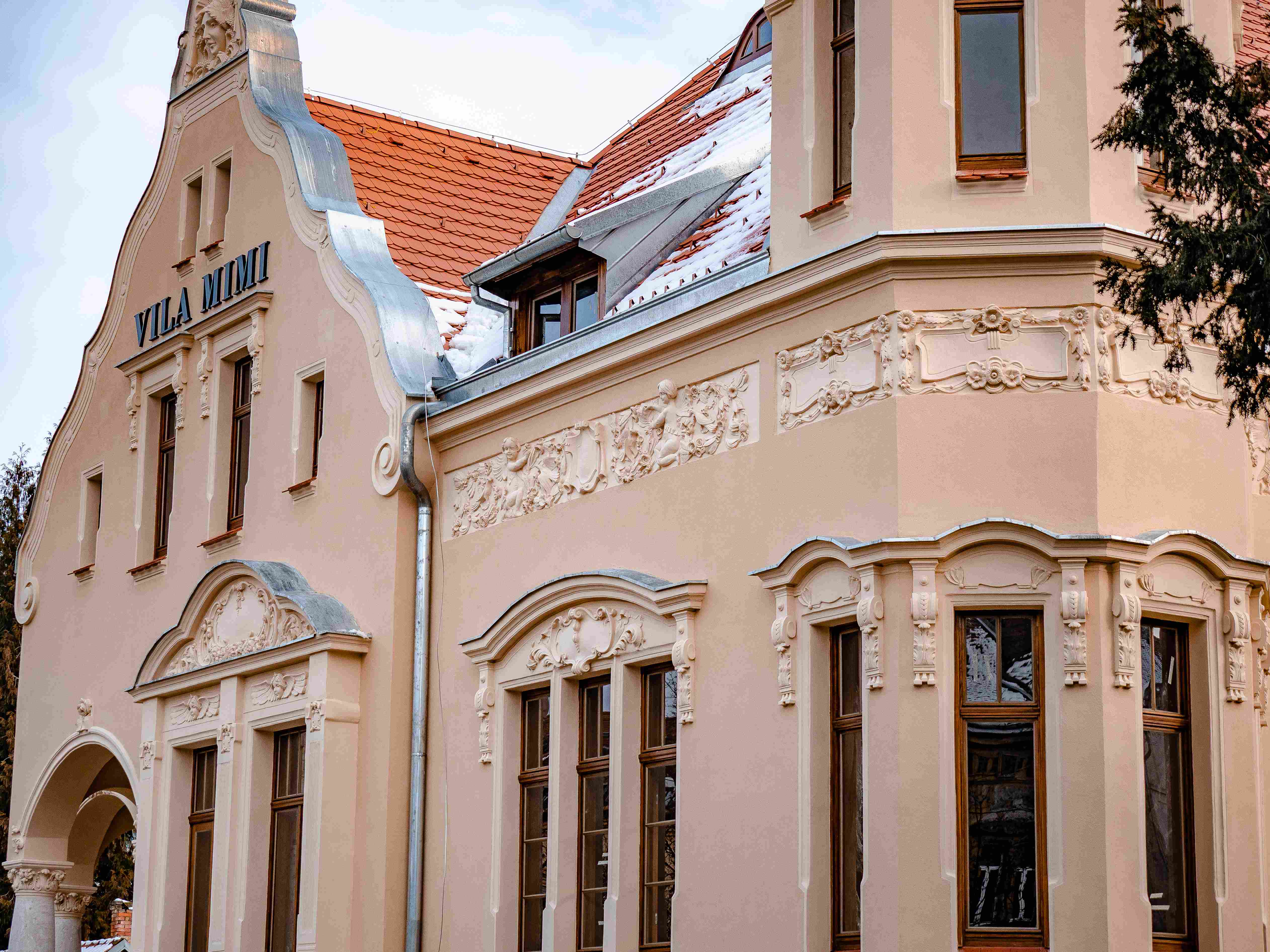

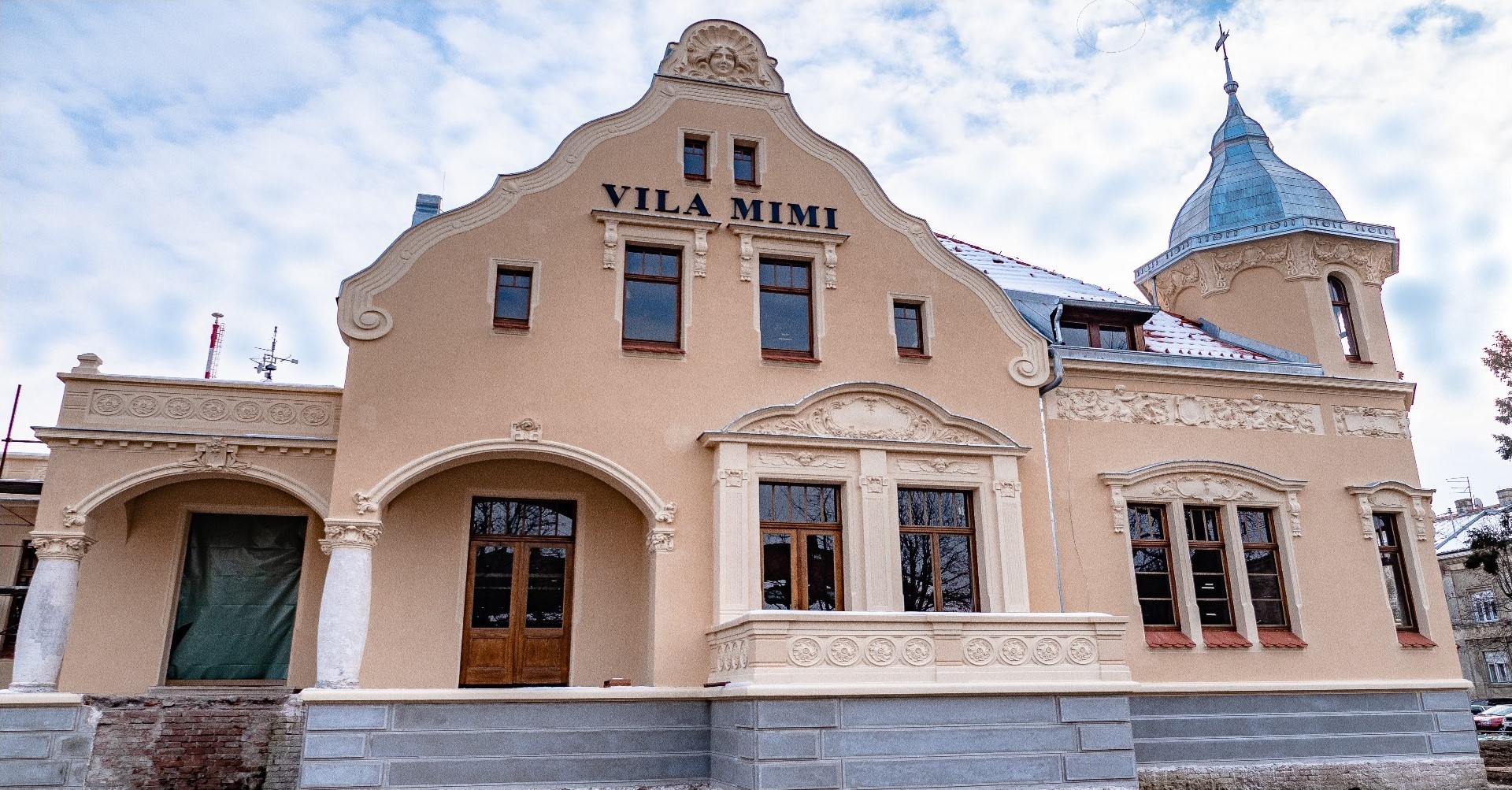
All contemporary images of the renovated Villa Mimi © Damir Janković
All Full-Time Osijek and Baranja Students Get Free Train Travel
January 9, 2021 – From this year, full-time Osijek and Baranja students can get free train travel any time throughout their own county and for travel to educational centres anywhere in Croatia, in a new deal struck by the county and the national train operator
Once a sea bed, the vast flatlands of Slavonia are perfect for farming. At one time, this area was the breadbasket for much of Yugoslavia. It really wasn't so long ago that many folks left dry and dusty Dalmatia in search of employment and new lives on this fertile ground. Now, it's the other way round - Slavonian youth travel to the coast each summer in search of seasonal work. Others move to Ireland, Germany, Austria. Slavonia is losing many skilled younger people at an alarming rate. Increased mechanisation has reduced the need for labour in the area's agriculture. And, besides, most Slavonian youths are these days educated to a degree where their ambitions are greater than joining local agricultural endeavours.
In an area with limited possibilities, limited opportunities, education lies at the heart of survival in Slavonia. Local authorities know this and try to facilitate education as best they can. It is to that end that those in the Slavonian county of Osijek and Baranja have struck a deal with Croatia's national train operator to offer free train travel to all full-time Osijek and Baranja students.
Agreed upon at the end of last year, the scheme was implemented on 1 January 2021. Osijek and Baranja County has agreed to co-finance journeys for full-time Osijek and Baranja students who study not only within the county itself but across the whole of Croatia.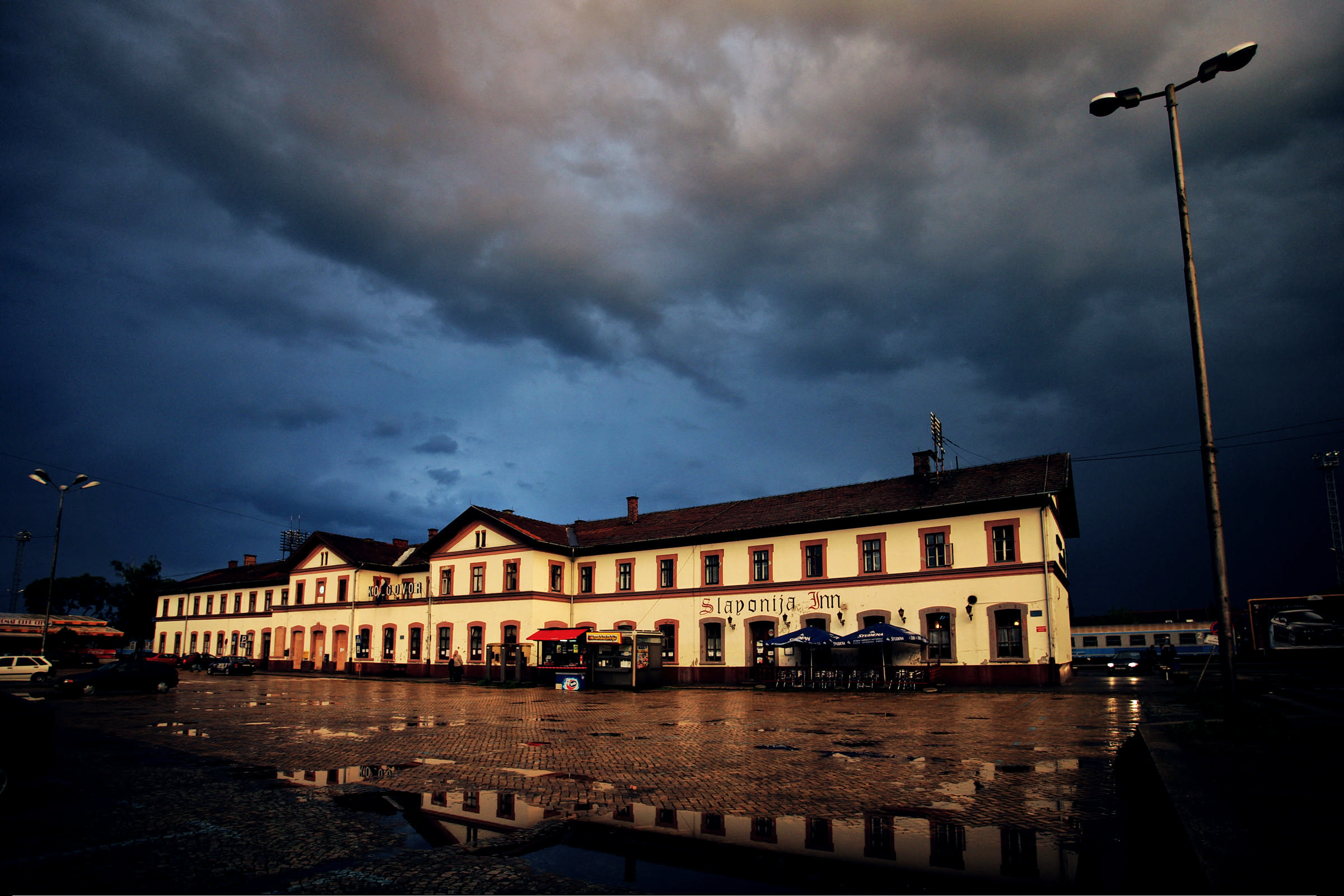 Osijek train station © Romulić & Stojčić
Osijek train station © Romulić & Stojčić
Monthly tickets for travel within the county already held a discount of up to 65 percent given to full-time students by the train operator, depending on the route. The County has now agreed to pay the remainder of the monthly ticket for all full-time Osijek and Baranja students. To meet the requirements of this deal, the departing and destination stations must both be in Osijek-Baranja County. The free monthly ticket allows an unlimited number of trips on the route, meaning that Osijek and Baranja students can also use the train for free on recreational journeys within the county.
The second deal sees the County co-finance 50% of journey costs for full-time Osijek and Baranja students who study elsewhere in Croatia, with the train operator HŽ agreeing to grant a discount to cover the other 50 %.
In order to obtain a free (monthly or individual) ticket, it is necessary to first obtain a certificate from their Administrative Department for the Economy. To get the certificate, Osijek and Baranja students must submit a copy of their identity card, a certificate of full-time study and two completed application forms (these can be found on the county's website www.obz.hr). Requests can be made in person or by mail (Osijek-Baranja County, Administrative Department for Economy, Županijska 4, Osijek or on the e-mail: This email address is being protected from spambots. You need JavaScript enabled to view it.
Free tickets can thereafter be bought by Osijek and Baranja students at the box office, prior to travel, or on the train itself, upon producing the relevant and needed documentation.
Stories from the Diaspora: Moving from Osijek to Sweden
December 8, 2020 – Yesterday, TCN reported that Croatia is among the most sought after tourist destinations for people in Sweden. Today, we meet a couple who went the other way – from Osijek to Sweden – for a more permanent stay. How does life compare for young couple Marin and Vedrana?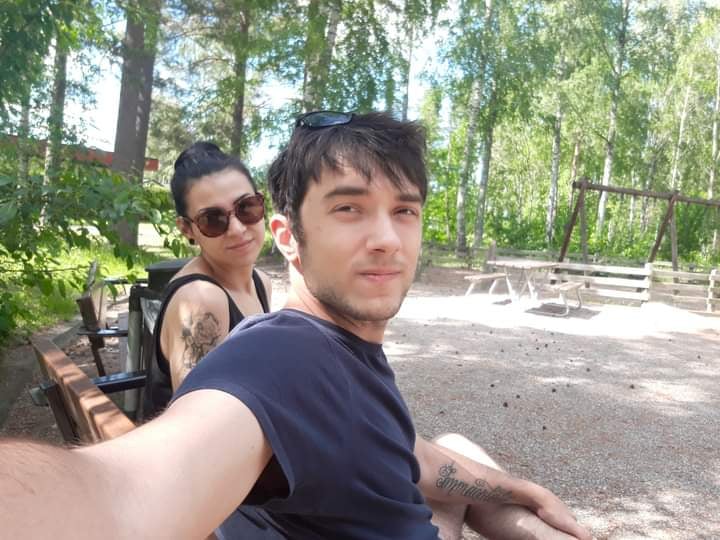
Marin Relja from Darda (25) and Vedrana Maksimovic from Sarvaš (24) swapped Slavonia for Västerås in June of 2019. We interviewed them to find out some of the ways life compares when you move from Osijek to Sweden.
Marin: We lived with parents when we were back in Osijek. A lot of the time we spent at Vedrana's parents, we had our own space there, which was great, but we didn't have total freedom. There were always quite a lot of other people around and when you are surrounded by family, certain responsibilities are put on you. It's much easier to live by yourself.
Vedrana: If we'd stayed in Osijek, probably we would have needed some support from our families so we could live together, independently. Here, we can do that by ourselves.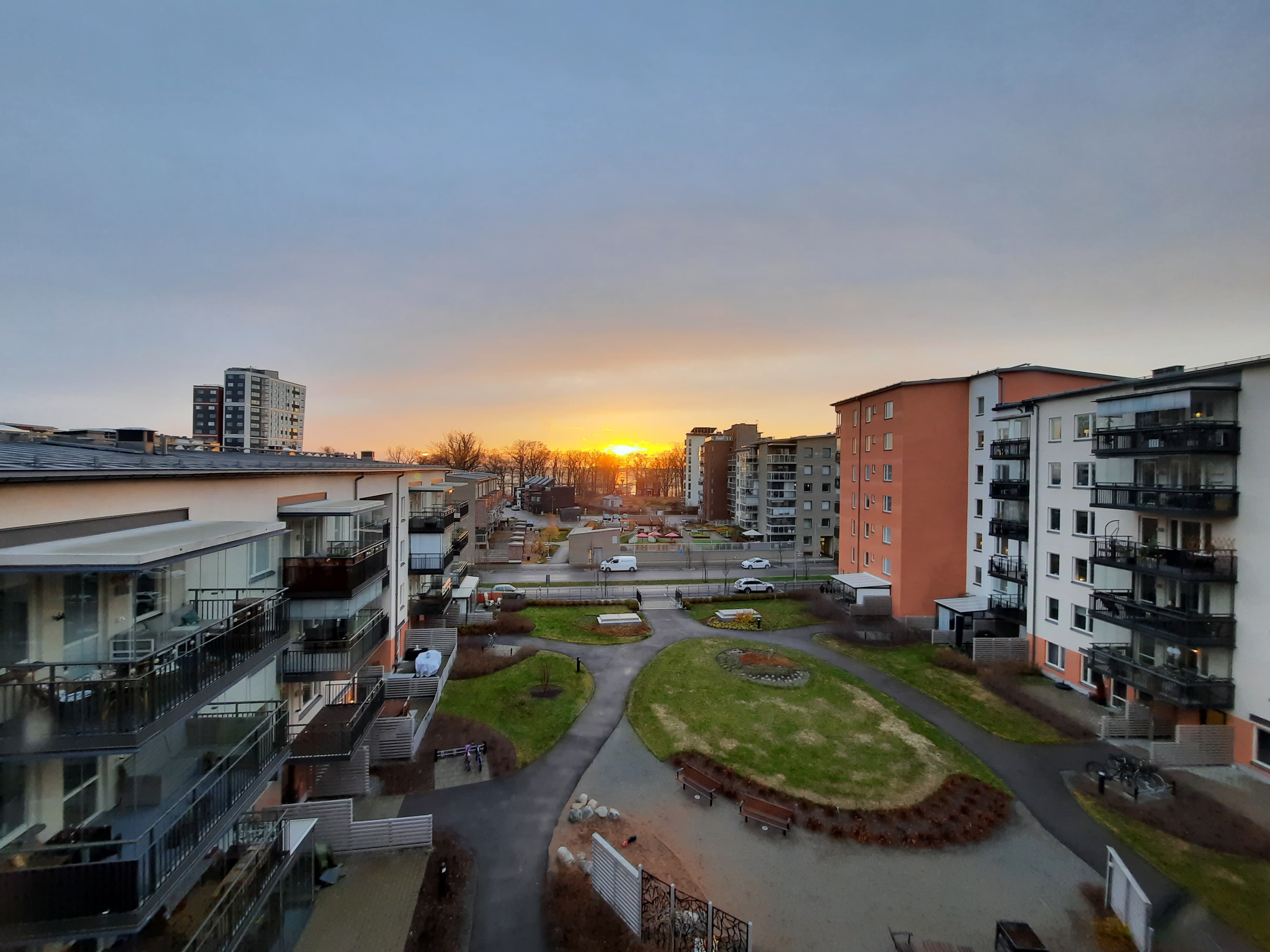 Marin and Vedrana's new neighbourhood, in Västerås, Sweden
Marin and Vedrana's new neighbourhood, in Västerås, Sweden
Why did you move from Osijek to Sweden?
Marin: There are lots of different reasons - opportunities, money, the church...It's cold. And there is a lot of snow. I like winter a lot more than summer. If it's cold, you can always put on more clothes. If it's too hot, what can you do?
Vedrana: I hate the winter and cold weather, actually. Marin wanted to come here. And my brother was already here. Maybe because it's totally different? Marin wanted to go to Ireland or Sweden. But, Ireland is a religious country, Catholic, like back home. We didn't want to live in another place like Croatia. I was here visiting, one year before we came, and it was -15. Freezing. Right now it's not so bad, around 4.
Vedrana doesn't like the cold. Marin's dream job is riding snowmobiles all day.
Marin: It can be -10 here but feel like -30 because the winds are sometimes very strong. Last winter wasn't so bad, but if you're on the windy side, it can feel really cold. I wear Christmas socks a lot. They're very warm. I have many pairs.
I saw you also have many pairs of papuče (slippers) by your front door. Why?
Marin: The tradition isn't going to die (Vedrana laughs). We brought that tradition with us from Osijek to Sweden. Most of them are for us, so we can wear different pairs, but some are for guests, although we rarely have any. We just have extra papuče that we don't use.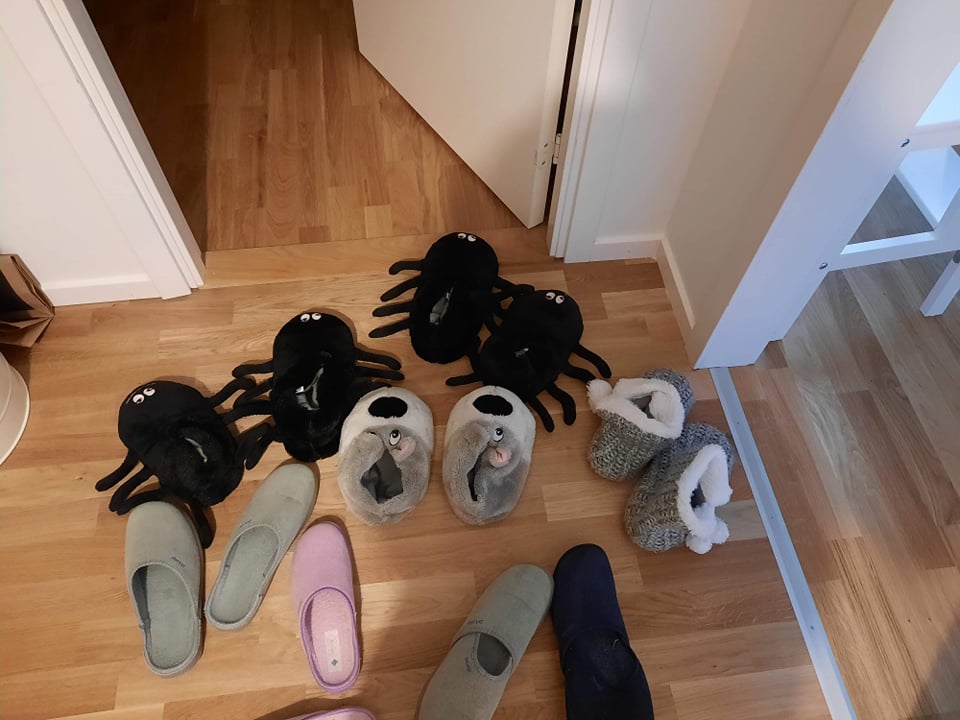 Croatians overseas: a tsunami of papuče
Croatians overseas: a tsunami of papuče
Vedrana: Our apartment here costs around 800 Euros per month. That includes water and payment for cleaning of the communal areas of the building. We pay extra for electricity, wifi and home insurance. Home insurance is mandatory. It costs around 100 Euros a year.
Marin: We came to Västerås because Vedrana's brother was here, but now he moved to another place. He helped us find an apartment when we first arrived. It's difficult to arrange an apartment from Osijek to Sweden with an agency - you actually have to be here. It's not something we could do online before we came.
Vedrana: We were saving for around a year before we came, in preparation. We got around 30, 000 kuna. We spent it on travelling here, start up and the first apartment. My brother's wife worked in a company here and she made a recommendation for me and I started to work there. Then, I made a recommendation for Marin. Everything here is made with recommendations. Everything. Our company offers services. Anything you could think of. Home services, customer services. Sometimes you might be sent gardening, babysitting, fixing something in someone's home, painting a room, window or home cleaning, helping someone move house. Sometimes the client is a private individual, other times it's a company.
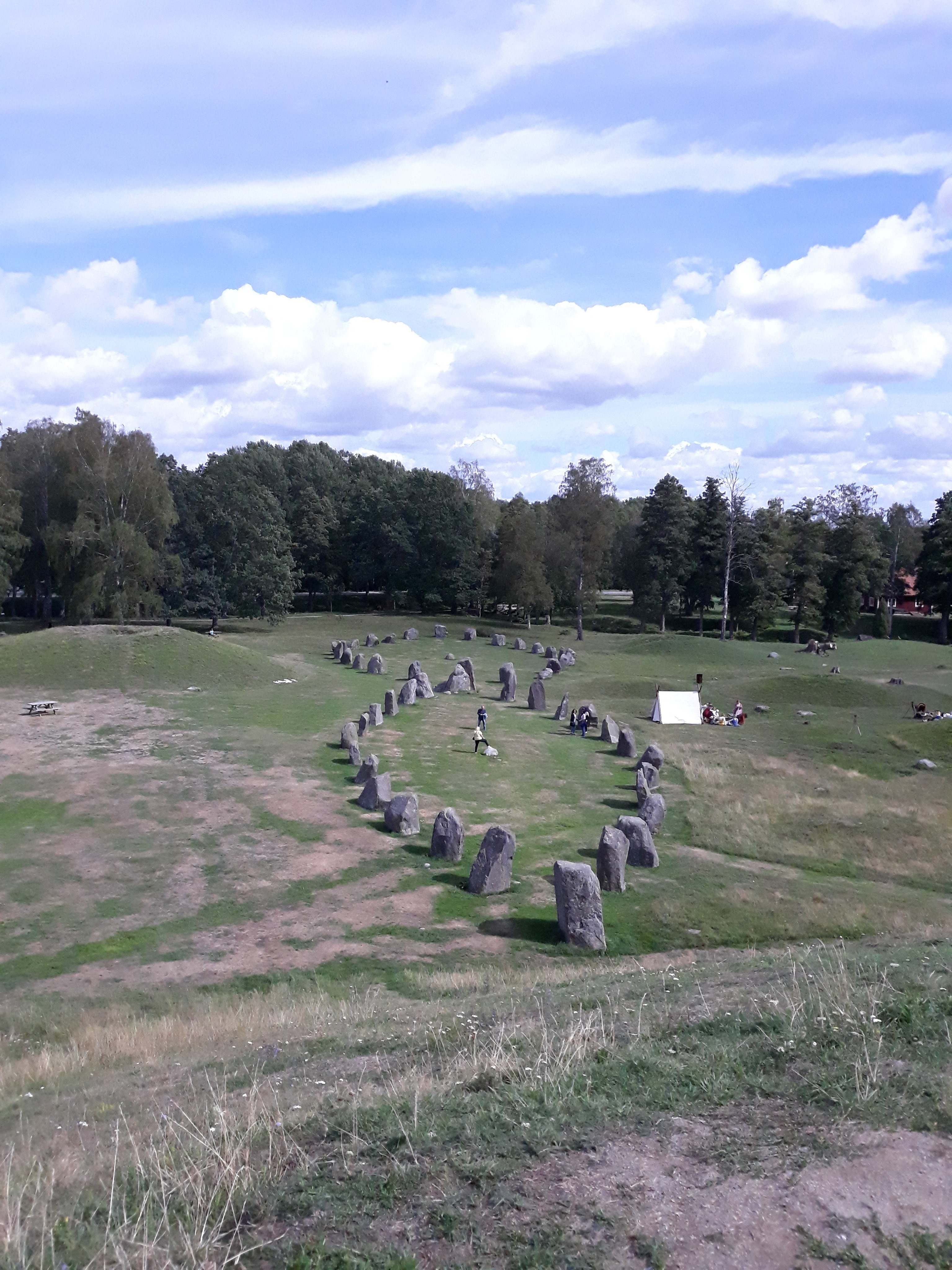 "We like going for walks here. The scenery is very different to Slavonia" Vedrana
"We like going for walks here. The scenery is very different to Slavonia" Vedrana
Vedrana: We don't work full time here. We work around 75% of a full-time job. So, it's part-time. But still we have enough money to live and much more than back in Osijek. In Osijek, for working in the store full time, I earned 400 Euros per month. As a waiter, Marin earned around 600 Euros per month, depending on tips. Here, after tax, we earn around 1200/1300 Euros each. Sometimes Marin earns more because he can drive and so he can be sent outside of the area to do jobs. He is paid for his driving time.
Vedrana: Around one week ago, I bought myself some boots for 200 Euros. I would never have been able to do something like that in Osijek. When we went food shopping in Osijek, we always went with a list. If you didn't have a big salary, like us, you have to count what you are spending. Here, we don't do that. If I see something that I like, I will buy it.
What jobs would you like to be doing there?
Marin: I would like to work as a graphics technician or as a waiter again. I like being a waiter, I like working in hotels. Of course, my dream job would involve driving a snowmobile all day.
Vedrana: I would like to be a care assistant, but I need to learn Swedish first and then go to school.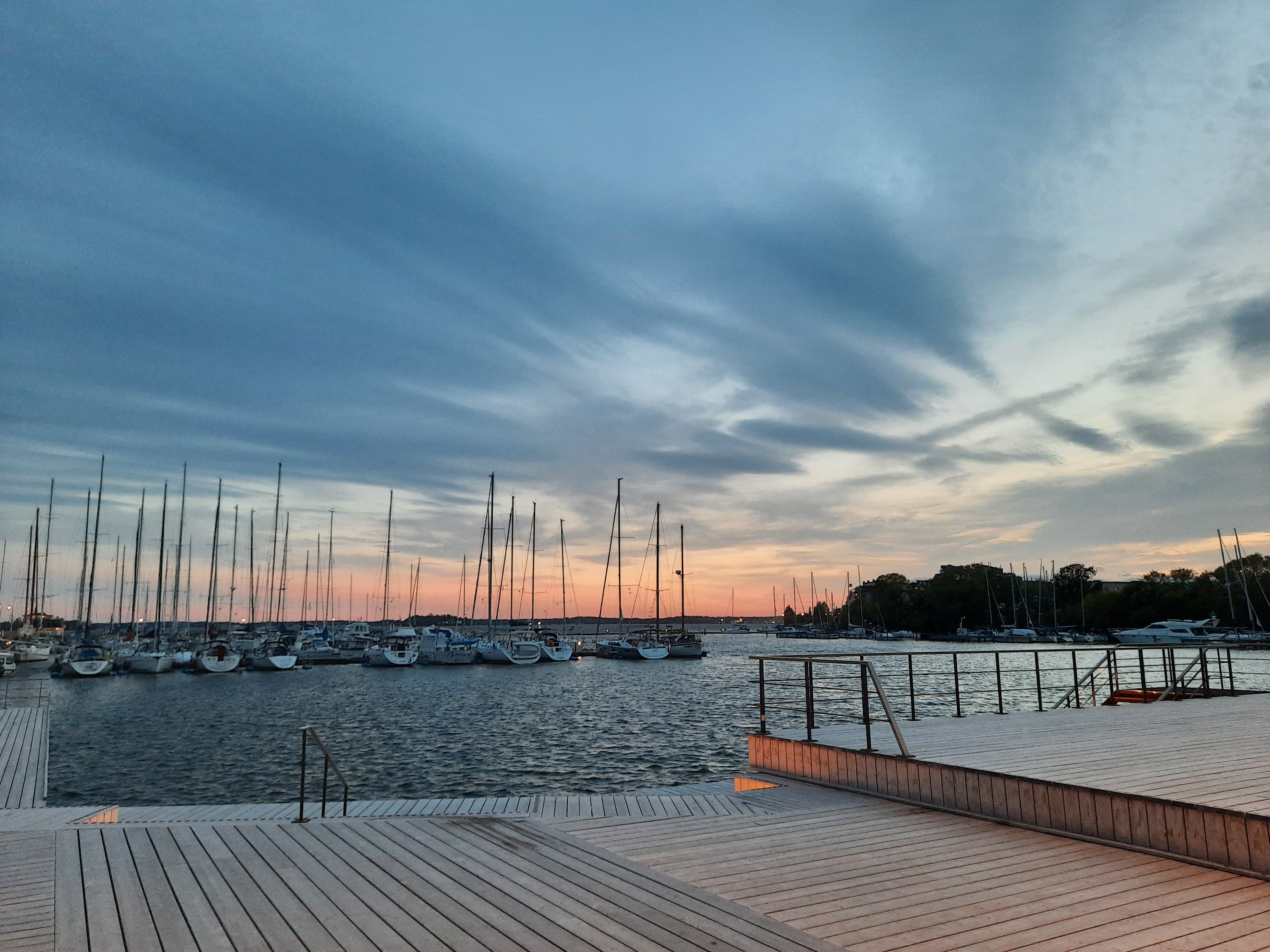
Marin: We had nothing when we arrived. We had two small chairs and we borrowed a thin mattress from her brother that we slept on. We bought pans, pots, plates, glasses and knives and forks first. Next, we bought a table and chairs. Then, we acquired a bed, we bought a sofa. After that, we stopped buying anything until we found an apartment that we could see ourselves living in for a long time. That's the one we are in right now, it's our third apartment here.
Did you meet any other people from the Balkans in Sweden?
Vedrana: Yes. I met a lady in an apartment agency. She took our ID details to check our backgrounds and when she saw our names, she said “Maksimovic? Where are you from?”, in English. When we said “Croatia”, she said “Pa mozemo i ovako pricati (well, we can talk like this)”. She was from Sarajevo. She came here 10 years ago. Another time, I went to a woman's apartment to work for the day. As a client, she already had my name and details. When she opened the door, I said hello and asked if she spoke English. She replied. “Možemo pričati na našem”. Her name is Elena and she is from Belgrade. We still see her sometimes, she is nice. She's been here around 20 years.
How difficult it is to learn Swedish?
Vedrana: It's really hard.
Marin: It's easy. I started when we were still in Croatia, just to get some basics. A few months ago, we started school. I learned English and German in both elementary and secondary schools. You can see the associations of those languages with Swedish.
Vedrana: The accent is difficult. You must make different sounds with your mouth than we have in Croatian. It's a very beautiful language when you hear it. It's not like German.
Marin: They sound funny when they talk. It sometimes sounds like they are singing.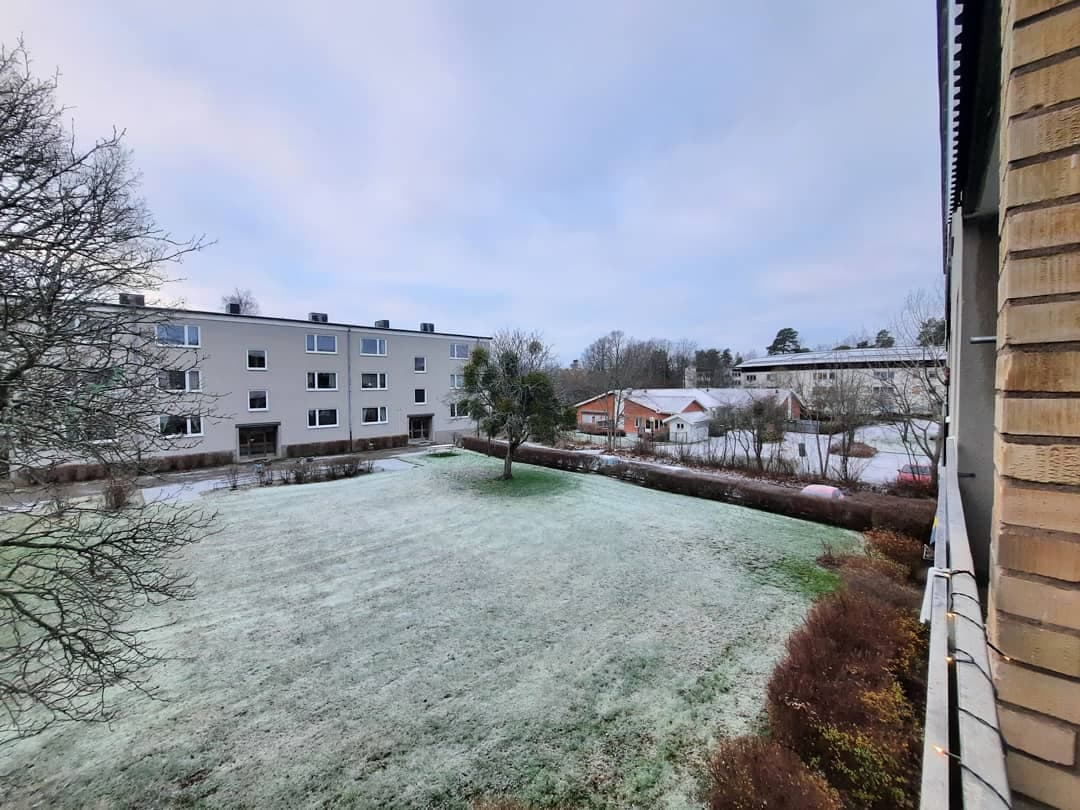
Would you move to a different city in Sweden if the right job opportunity was offered to you?
Vedrana: Yes. I would like to go to Gothenburg or Stockholm. It's more urban there, more to see and do, and more opportunities.
Marin: I would like to go to the north of Sweden. It's even colder and more remote there. And more snowmobiles. But, they only do mining there, and I don't know how to mine, so I'm not sure if I could find something there.
How different is the food in Sweden?
Vedrana: We don't eat meat, so we got used to cooking for ourselves at home before we moved from Osijek to Sweden. So, we haven't noticed a big change in what we eat. We do both eat fish. The kinds of fish you can buy here are really different. We sometimes eat salmon steaks. You never really saw those much in Osijek. Salmon is not so expensive here like it is in Croatia. "In the summertime, it is light all the time. The sun comes up around 3am and stays up until 11pm, but there is light all the time. I like it. I don't have trouble sleeping through it. Marin did, at first. In winter, there is no sun. It gets lighter around 9am and that lasts until around 3pm. But, there is no sun. It's like that from late October until March" Vedrana
"In the summertime, it is light all the time. The sun comes up around 3am and stays up until 11pm, but there is light all the time. I like it. I don't have trouble sleeping through it. Marin did, at first. In winter, there is no sun. It gets lighter around 9am and that lasts until around 3pm. But, there is no sun. It's like that from late October until March" Vedrana
Marin: People are a lot calmer here. Driving is different. There are not so many cars on the road in Osijek, but here, nobody sounds their horn at you or sticks their middle finger up at you because they don't like the way you drive. Nobody seems to be in a rush.
Marin: Alcohol is expensive here if you go to a bar or club. In Osijek, you pay maybe double the price for beer in a bar that you would in the supermarket. Here, the beer you buy for 15 kronas in the store you would pay 70 kronas for in a bar. But, it's not so expensive to go out if you work full time.
Vedrana: Here, you cannot buy alcohol in a store or a supermarket like back home. You have to go to the special Systembolaget store to buy it. You must be 20 years old, it closes at 8pm in the evening, it closes at 3pm on Saturday and is closed on Sunday.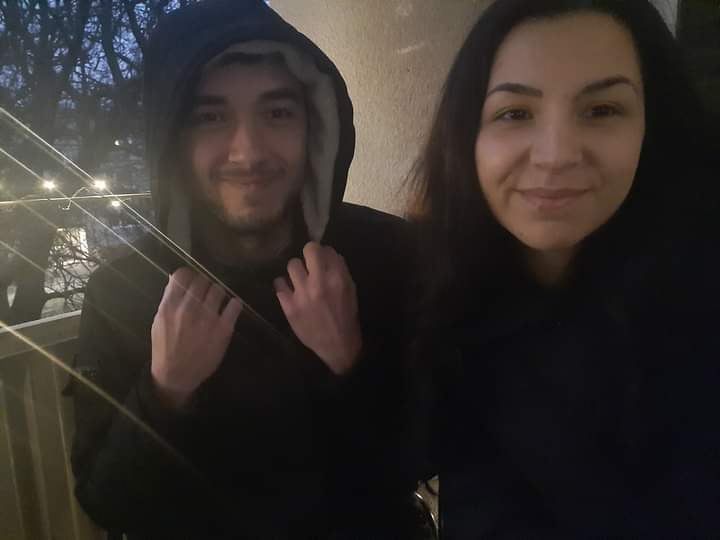
Marin: When you move from Osijek to Sweden, you can meet people from all over the world. It's not like Slavonia. We have neighbours from India. We speak together in English. We have a friend from Sri Lanka. I met a guy at work who is from Africa.
Do you ever regret moving from Osijek to Sweden?
Marin: Not sure yet. We don't regret it, but sometimes we feel nostalgic. But we realise that is amplified by this COVID situation – there's just not been any opportunity to travel back home and visit family and friends.
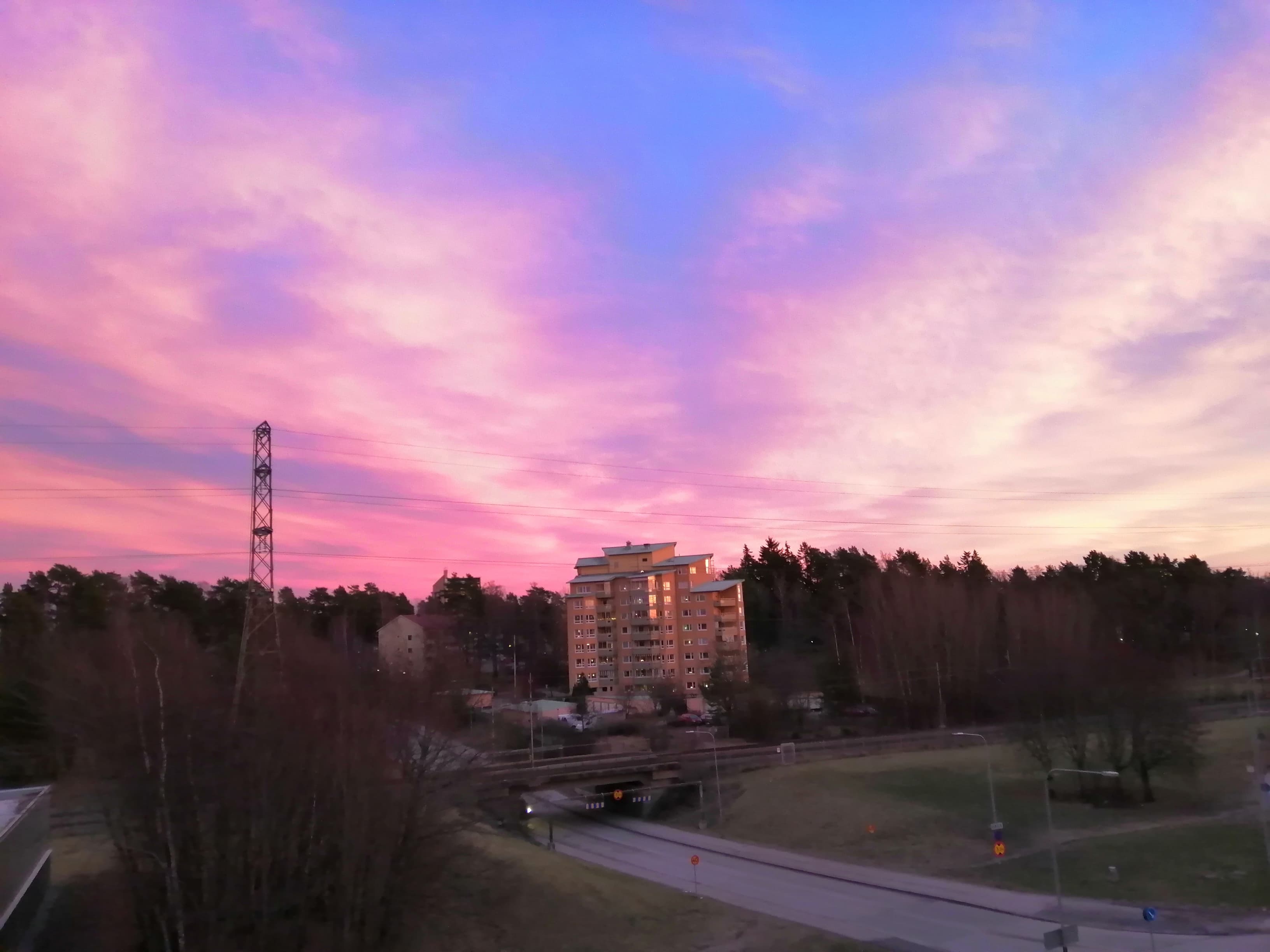
The Country's Biggest Export... Croatian Chocolate!?!
November 4, 2020 - Olive groves and vineyards are iconic elements of the vista on the Croatian coast. They appear frequently, as does the international recognition for the wine and olive oil they produce. This makes it all the more surprising to learn that the country's biggest export is, in fact, Croatian chocolate.
On 4 November 2020, 24 Sata reported the surprising statistics about Croatian chocolate. Their sources are agricultural and food product reports from 2018 and 2019, made by the Croatian Chamber of Commerce. They state that Croatian chocolate and cocoa products were at the top of the export rankings. Croatia wine and Croatia olive oil didn't even get a look-in the top five Croatian exports – the next biggest were corn, tobacco products and then fresh and frozen fish. © Alexander Stein
© Alexander Stein
The production of wine and olive oil in Croatia goes back many thousands of years. The industry for making Croatian chocolate is a baby in comparison – Europeans only encountered cacao beans in the 16th century, while exploring and colonising the Americas. Still, the production of Croatian chocolate does have quite a history.
Bajadera by Zagreb's Kraš is one of the most popular boxes of Croatian chocolate to be given as a gift © Kraš
The oldest maker of Croatian chocolate is Zagreb's Kraš. The company's roots lie in three confectioners from the early 20th century. Union is the oldest chocolate manufacturer in south-east Europe (just two years after its foundation in 1911 was awarded the title of supplier to the royal court in Vienna and Budapest), Karolina, a former flour mill which switched to making biscuits and waffles in 1921 and Bizjak, founded in 1923, which made cookies and wafers. These companies, along with a number of smaller Zagreb confectionery manufacturers were merged in 1950 under the name of Kraš, in honor of Josip Kraš, a Croatian union leader and anti-fascist who was killed in World War II. Their range today includes the bars Dorina and Animal Kingdom, boxed classic Bajadera, chocolate biscuits Domaćica and the wafer bars Napolitanke and Tortica. Kandit's classic Rum bar, made in Osijek. Hands-down the best ultra-cheap Croatian chocolate mini-snack bar © Kandit
Kandit's classic Rum bar, made in Osijek. Hands-down the best ultra-cheap Croatian chocolate mini-snack bar © Kandit
The second oldest company making Croatian chocolate is Kandit, which is today still based in Osijek where its parent company was established way back in 1905 as a sugar production outfit. It switched to making waffles, sweets and chocolates in the early 1920s. Its range today includes the kids' favourite Choco Banana and hands-down the best ultra-cheap Croatian chocolate mini-snack bar Rum. It's a classic. Keeping on-trend, the relatively recent No Guilt series of high-quality, no-sugar chocolate bars has made a great addition to Kandit's offer. This range is the only Croatian chocolate currently recommended by the country's diabetic association. Kandit's No Guilt range has no added sugar and several bars with a high cacao content © Kandit
Kandit's No Guilt range has no added sugar and several bars with a high cacao content © Kandit
The third big player in the Croatian chocolate scene is Zvečevo, from Požega. The company traces its roots back to 1921, but its association with chocolate only really began in 1934 when Swiss company Nestle began to manufacture there (the association continued until 1995). Zvečevo is notable as having invented the combination of toasted rice and milk chocolate in a bar. Now considered a classics pairing across the world, it was first produced in 1964 in Požega under the name of the Mikado bar. As well as still making this classic of Croatian chocolate, Zvečevo now makes a dark chocolate version, chocolate for use in home cooking and a popular range of strong alcoholic drinks. It has won several awards for its ethical and eco-friendly business practices. Zvečevo's Mikado range. With Mikado, the Požega-based manufacturers were the first in the world to combine rice and chocolate © Zvečevo
Zvečevo's Mikado range. With Mikado, the Požega-based manufacturers were the first in the world to combine rice and chocolate © Zvečevo
Standard Croatian chocolate available on the high street can be a surprise to visitors. It has a higher content of the cheaper ingredient (sugar) than the more expensive ingredient (cacao) than many chocolates made in more westerly European countries. But, that's the way Croatians seem to like their chocolate. Well, most of them. According to a survey conducted in 2017 by the Hendal agency and JaTRGOVAC magazine, 63.5% of asked Croatians said they choose domestic chocolate products above the 36.5% who more often buy foreign chocolate products. © Nawal Escape
© Nawal Escape
Data from the Central Bureau of Statistics state that in 2018 the country produced 18,799 tons of Croatian chocolate and cocoa products. Over 800 million kuna's worth of Croatian chocolate was exported in the same year. The bond between Croats and their Croatian chocolate is strong, the love heartfelt. It is no doubt this affection for confection that has prompted some of the third of Croats who go in search of foreign alternatives, for the introduction of premium chocolate ranges by the aforementioned big manufacturers of Croatian chocolate and for the rapid increase in artisan and handmade Croatian chocolatiers over recent years.
Croatian chocolate smaller and artisan producers
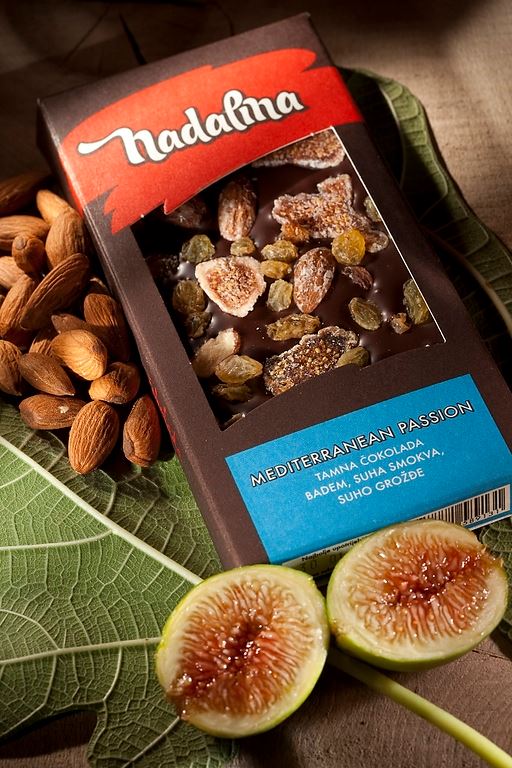
Split-based Nadalina have become increasingly recognised over recent years © Nadalina
Split-based Nadalina make high-quality raw chocolate bars with non-standard flavours like rosemary, figs and olive oil. They held the Guinness World Record for making the world’s largest chocolate bar and in 2017 were voted the world's third-best at the International Chocolate Awards. Vilma slastice from the island of Rab combine dark chocolate with flavours like Pag cheese, white truffles and lavender. Salt manufacturers Solana Nin have a salt-infused chocolate and Zagreb's Chozen make impossibly-pretty handmade Croatian chocolate pralines with a surprising and adventurous range of flavours. Besides these, the list of small manufacturers of Croatian chocolate grows every year. It seems that the love affair between Croats and their chocolate is far from finished, and that's certainly good news for Croatian exports. Impossibly pretty handmade chocolate truffles, produced in Zagreb by Chozen © Chozen
Impossibly pretty handmade chocolate truffles, produced in Zagreb by Chozen © Chozen
For the latest travel info, bookmark our main travel info article, which is updated daily.
Read the Croatian Travel Update in your language - now available in 24 languages
Continental Croatia Trains: Inland Opens Up With Green Travel
October 3, 2020 - With charter airlines in a state of flux and Croatia Railways beginning a renewal of their fleet in Slavonia, are continental Croatia trains the eco-friendly and best way to unlock the inland's amazing potential?
Everything changes. Nothing stays the same. Even before 2020 arrived, lifestyles and trends were headed in new directions. Eco-tourism and agro-tourism were two of the fastest-growing areas within the travel sector, this behaviour change a response to concerns about the environment. And nowhere in the country stands better poised to take advantage of this interest than continental Croatia.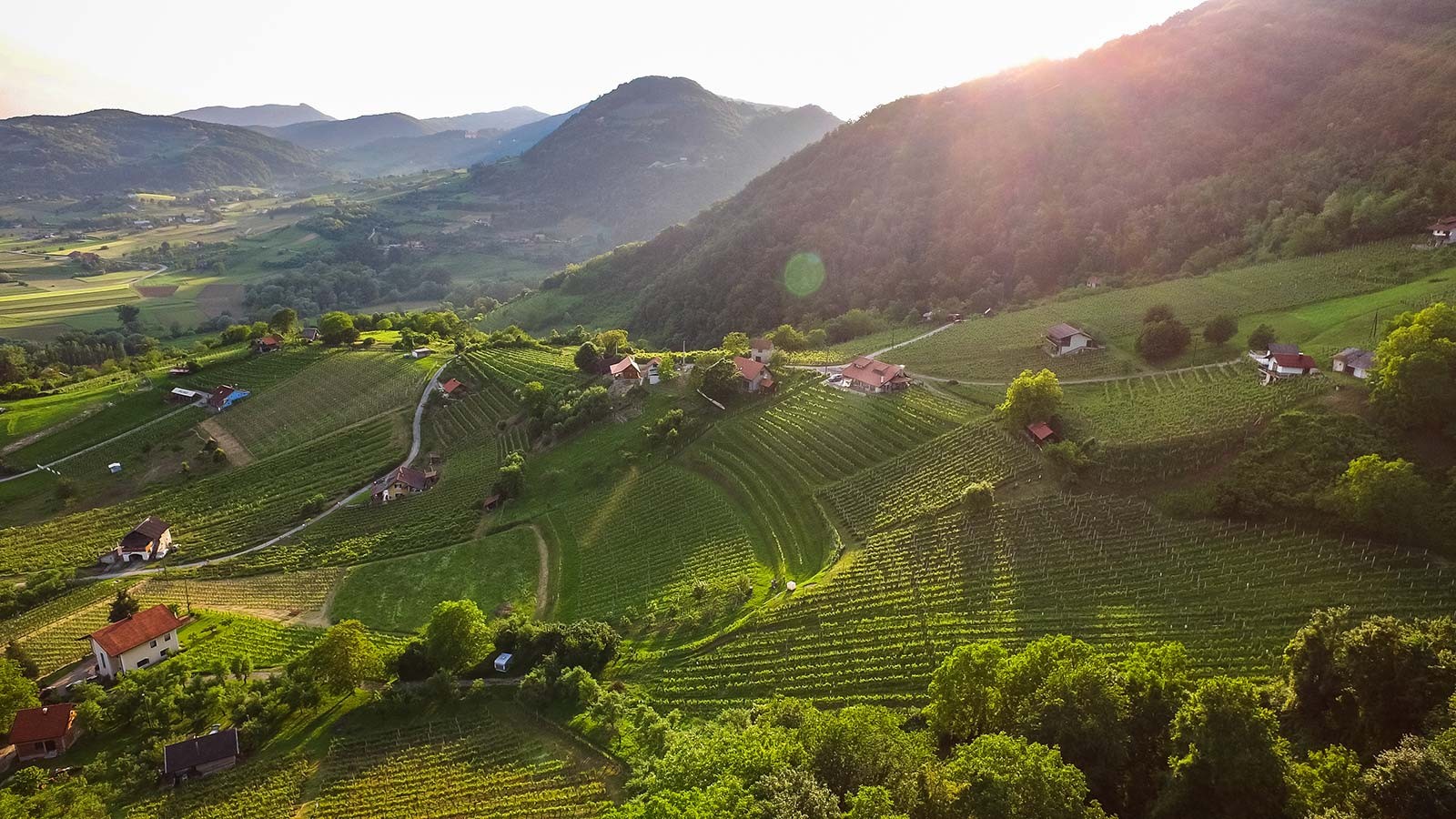 Impossibly pretty Zagorje - the region lies just north of Zagreb and is accessible by continental Croatia trains © Ivo Biocina / Croatia National Tourist Board
Impossibly pretty Zagorje - the region lies just north of Zagreb and is accessible by continental Croatia trains © Ivo Biocina / Croatia National Tourist Board
From the impossibly pretty hills of Zagorje, the peaceful rivers of Karlovac county and the hidden vineyards that surround the capital Zagreb to the vast Pannonian flatlands that stretch to Slavonia, Baranya, Vukovar-Srijem and beyond, the varied topography of continental Croatia is wild, exciting and - by many - wholly undiscovered.
This is land where agriculture and nature thrive side by side, where the stresses of modern-day existence ebb away as you readjust to a way of life that would look mostly familiar to the people who lived here centuries ago. These are places where you can truly be at one with yourself and with your surroundings. In continental Croatia, you often find yourself in an environment that is both timeless and traditional, yet wholly contemporary in regards to its ecological aspirations. And you're never far away from an exciting city environment that you can dip into on a whim – not just Zagreb, but Osijek, Slavonski Brod, Karlovac, Sisak and Varaždin too.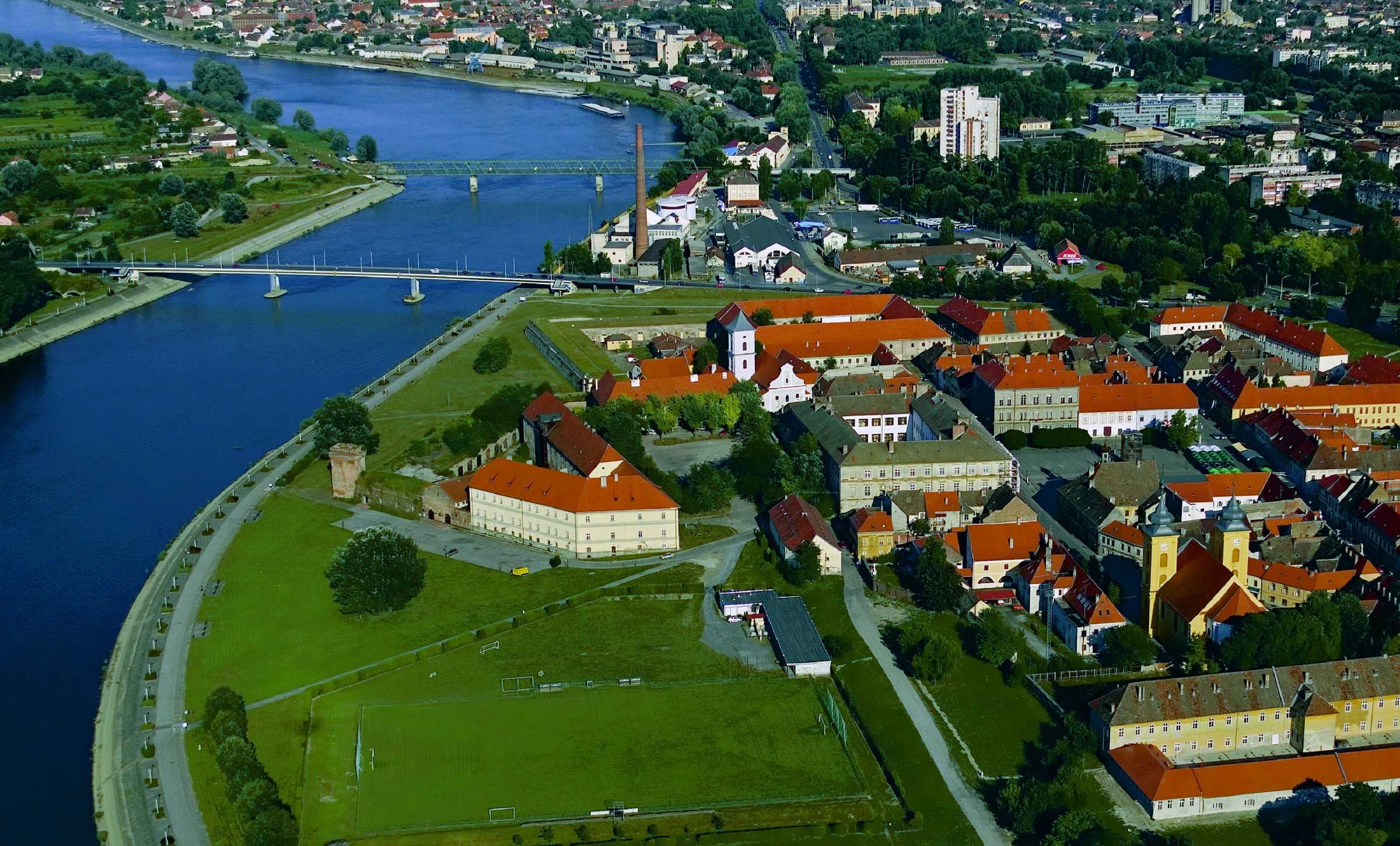 To those who really know and love Croatia, Osijek is simply unmissable. It is both the capital of and the doorway to Slavonia and Baranya and should be more accessible by continental Croatia trains. Sadly, international transportation links to the city by air are also quite poor. Improvements in accessibility to Slavonia and Baranya by rail and road are imminent © Romulić & Stojčić
To those who really know and love Croatia, Osijek is simply unmissable. It is both the capital of and the doorway to Slavonia and Baranya and should be more accessible by continental Croatia trains. Sadly, international transportation links to the city by air are also quite poor. Improvements in accessibility to Slavonia and Baranya by rail and road are imminent © Romulić & Stojčić
Unlocking the incredible potential of continental Croatia relies on getting the message out there and facilitating travel to these regions
In recent TCN features we have detailed that motorways within Croatia are among the best in Europe - once you're inside Croatia, travelling by car (or bus) between the regions couldn't be easier. We have also seen evidence of the huge interest in travelling here by rail and using continental Croatia trains.
Of all the modern methods of long-distance travel, rail is by far the most eco-friendly. What better way to begin an environmentally friendly holiday than by arriving on continental Croatia trains? When the country wisely decided to prioritise its internal motorway system, a modern and fast inter-regional rail network was put on the back burner. Nowhere suffers greater from this decision than continental Croatia.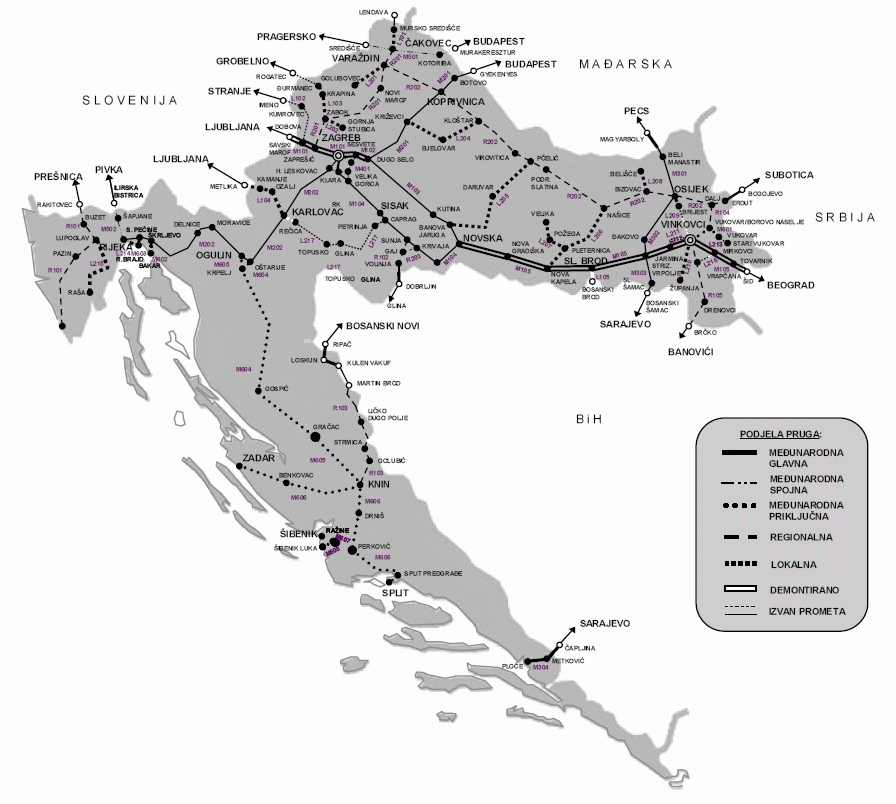 The Croatian rail network © Croatian Official Document uploaded to Wikipedia by Epepe
The Croatian rail network © Croatian Official Document uploaded to Wikipedia by Epepe
The only high-speed line that currently exists in Croatia links Rijeka to Budapest, via Zagreb and Koprivnica. Planned improvements hope to cut journey times between Zagreb and its nearest coastal city to an hour. Same as it ever was - Rijeka was the first Croatian city to be connected internationally by rail. That line also ran into the heart of Austro-Hungary and facilitated upper-class travel to places like Opatija. But does it best benefit the country to invest in more links to the coast or in continental Croatia trains? Well, the inland is not being ignored. Upgrades are being made to continental Croatia trains. This impressive beast actually services the country's coast. But would more investment in the continental Croatia trains network better service more people and help unlock the inland to tourists? Around 70% of the country's inhabitants live in continental Croatia © HŽPP
This impressive beast actually services the country's coast. But would more investment in the continental Croatia trains network better service more people and help unlock the inland to tourists? Around 70% of the country's inhabitants live in continental Croatia © HŽPP
The rail link between Zagreb and Slavonski Brod is so historic that it was once part of the four routes of the Orient Express. It has been maintained to a standard where you can make a relatively quick journey from the capital to Vinkovci via Slavonski Brod. The same cannot be said for rail travel to Osijek, the access point to Baranya and much more. So slow is the connection between Osijek and Zagreb that it has been possible over recent times to reach the Slavonian capital quicker by taking the train to Vinkovci, then the bus to Osijek, rather than travelling direct by rail. Osijek train station. A renovation to the building is planned for the near future © Romulić & Stojčić
Osijek train station. A renovation to the building is planned for the near future © Romulić & Stojčić
However, in February this year, Croatian Railways introduced four direct daily lines between Slavonski Brod and Osijek. And there will be a new tilting train line that will run between Zagreb to Osijek on Friday afternoon and from Osijek to Zagreb on Sunday afternoon, facilitating student travel. On October 15, the first low-floor train will run between Osijek and Vinkovci as an additional part of the renewal of their continental Croatia trains fleet in Slavonia. The welcome return of Croatia's second-oldest international rail line - linking Osijek to Pécs in Hungary, via Beli Manastir and Baranya - was introduced in late 2018.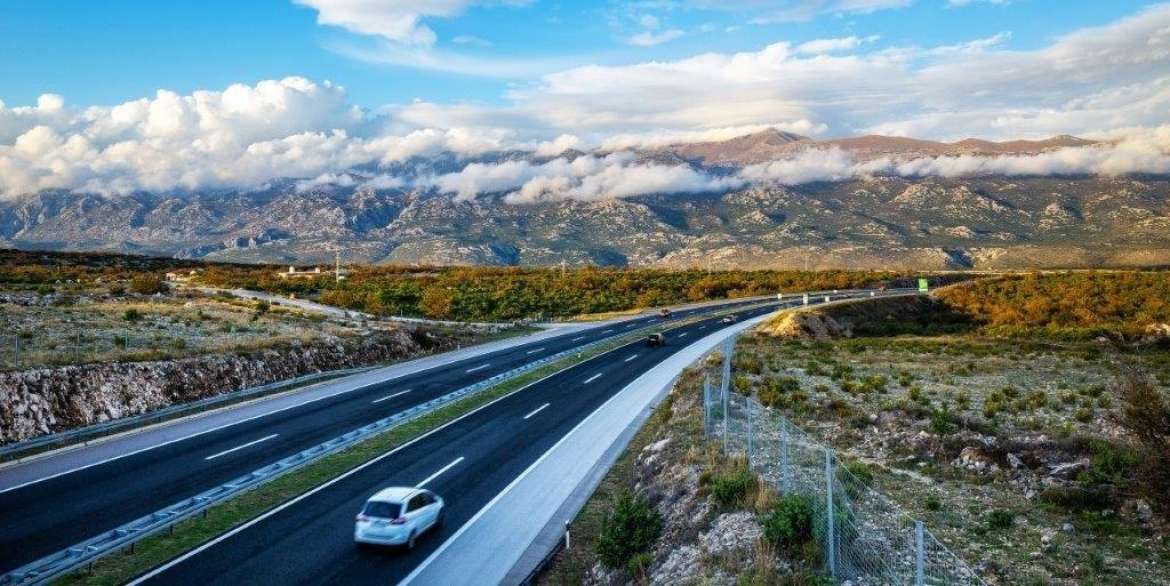 A motorway stretch between Metković and Dubrovnik, integrating the Pelješac bridge and the Croatian segment of the European corridor are the final big remaining projects in a three-decade-long undertaking to give Croatia one of the best motorway networks in Europe. Should Croatia's rail network be next? © Hrvatske Autoceste
A motorway stretch between Metković and Dubrovnik, integrating the Pelješac bridge and the Croatian segment of the European corridor are the final big remaining projects in a three-decade-long undertaking to give Croatia one of the best motorway networks in Europe. Should Croatia's rail network be next? © Hrvatske Autoceste
Access to Slavonia and Baranya will also be massively facilitated upon completion of the European corridor, which will connect North Europe to the Adriatic. Starting in Budapest, it necessitates the building of a bridge near Beli Manastir. Thereafter the motorway will pass by Osijek, connect to the Zagreb-Slavonia motorway near Lipovac, then pass through Bosnia and its capital Sarajevo and on to Ploče.
The removal of budget airline flights to the airport in Osijek remains a hindrance to attracting many international visitors to Slavonia and Baranya. However, with charter airlines facing the greatest uncertainty of all modes of transport at the current time, though their return is a must, it is perhaps now an ambition that should remain more long term. For the immediate future, improvements to rail travel look to be a brilliant way of opening up not only Slavonia, Baranya and Vukovar-Srijem, but also an eco-friendly access point capable of serving the whole of untapped continental Croatia.
For the latest travel info, bookmark our main travel info article, which is updated daily.
Read the Croatian Travel Update in your language - now available in 24 languages
Vukovar Student Becomes Croatia's First Animal Rights Lawyer
October 2, 2020 - Ivana Kramer from Vukovar became Croatia's first animal rights lawyer after graduating from the Faculty Of Law in Osijek
Ivana Kramer from Vukovar has become Croatia's first animal rights lawyer. She did so after graduating from the Faculty Of Law in Osijek, having received her diploma on September 23. The Faculty Of Law in Osijek is the only one in Croatia that has an elective course in animal rights.
In a recent interview with Vecernji List's Suzana Lepan Štefančić, Ivana explained that her desire to become Croatia's first animal rights lawyer stemmed from always having been around animals. “I have three dogs,” she said, in explaining her choice of the elective course in animal rights, “and my mother Željka adopts and helps abandoned animals.”
Some of the animals that Ivana's mum Željka looks after in Vukovar. Photos from the Facebook of Željka Kramer.
Ivana commuted to the Faculty Of Law in Osijek for five years in order to complete the course, choosing to stay living at home in Vukovar rather than move to the Slavonian capital. She says she would ideally like to stay in Vukovar to begin working in this field of law.
Her elective course in animal rights was undertaken in the final year of her studies and was the step that propelled her to the status of Croatia's first animal rights lawyer. During this final year, she researched the Animal Protection Act, which was implemented in 2017, with an emphasis on the situation in the Osijek-Baranja and Vukovar-Srijem counties. Her research included dog shelters in Vukovar and Osijek, where she occasionally volunteers.
For the latest travel info, bookmark our main travel info article, which is updated daily.
Read the Croatian Travel Update in your language - now available in 24 languages


